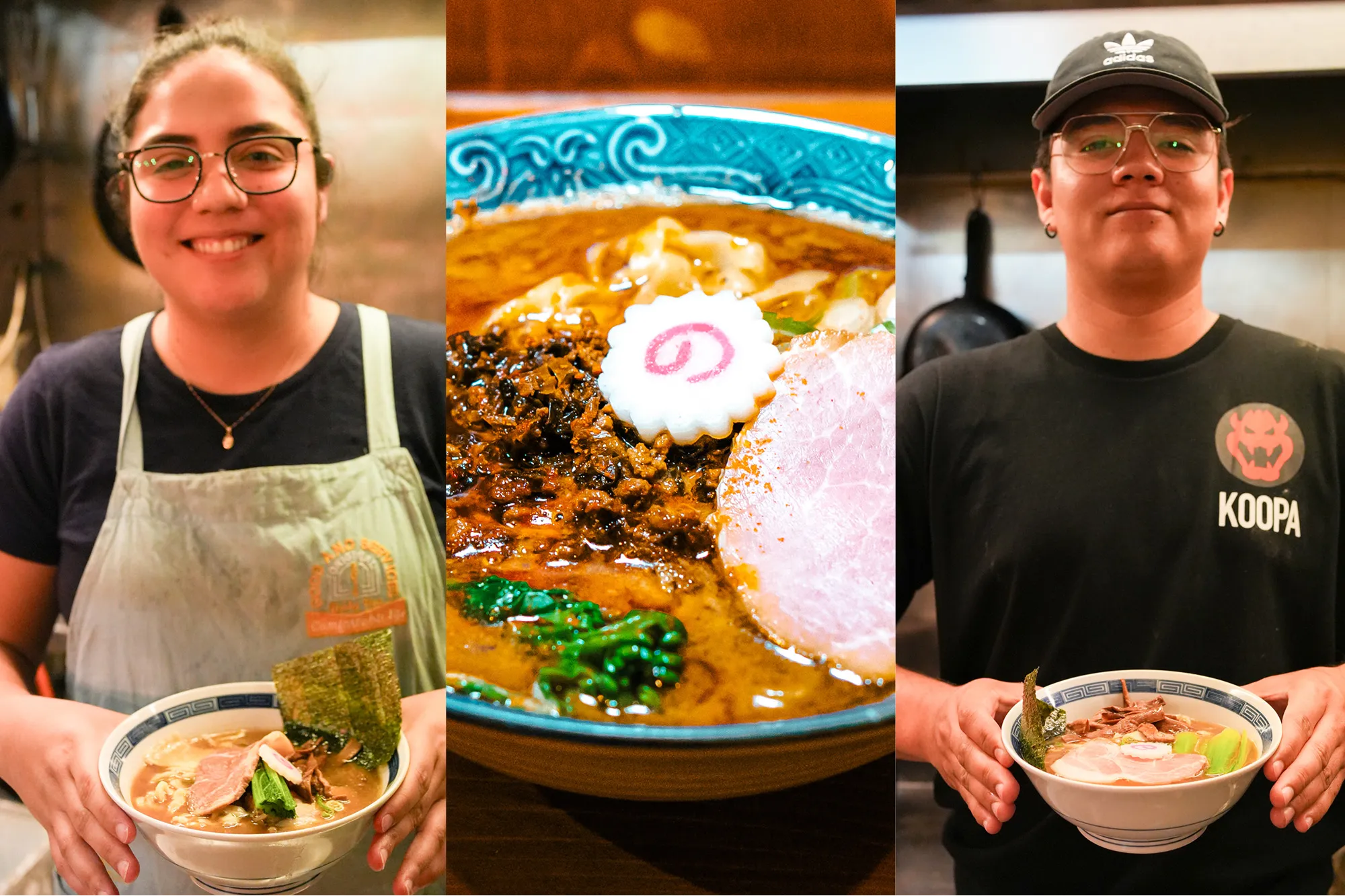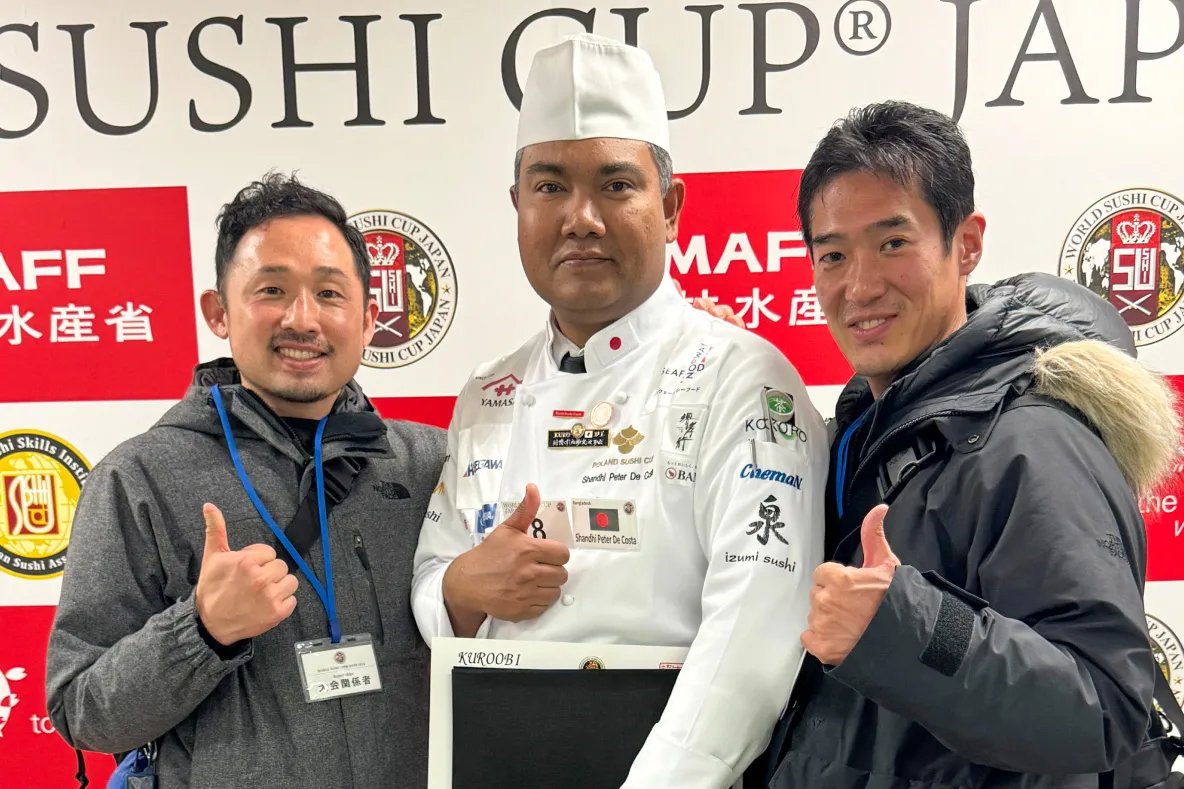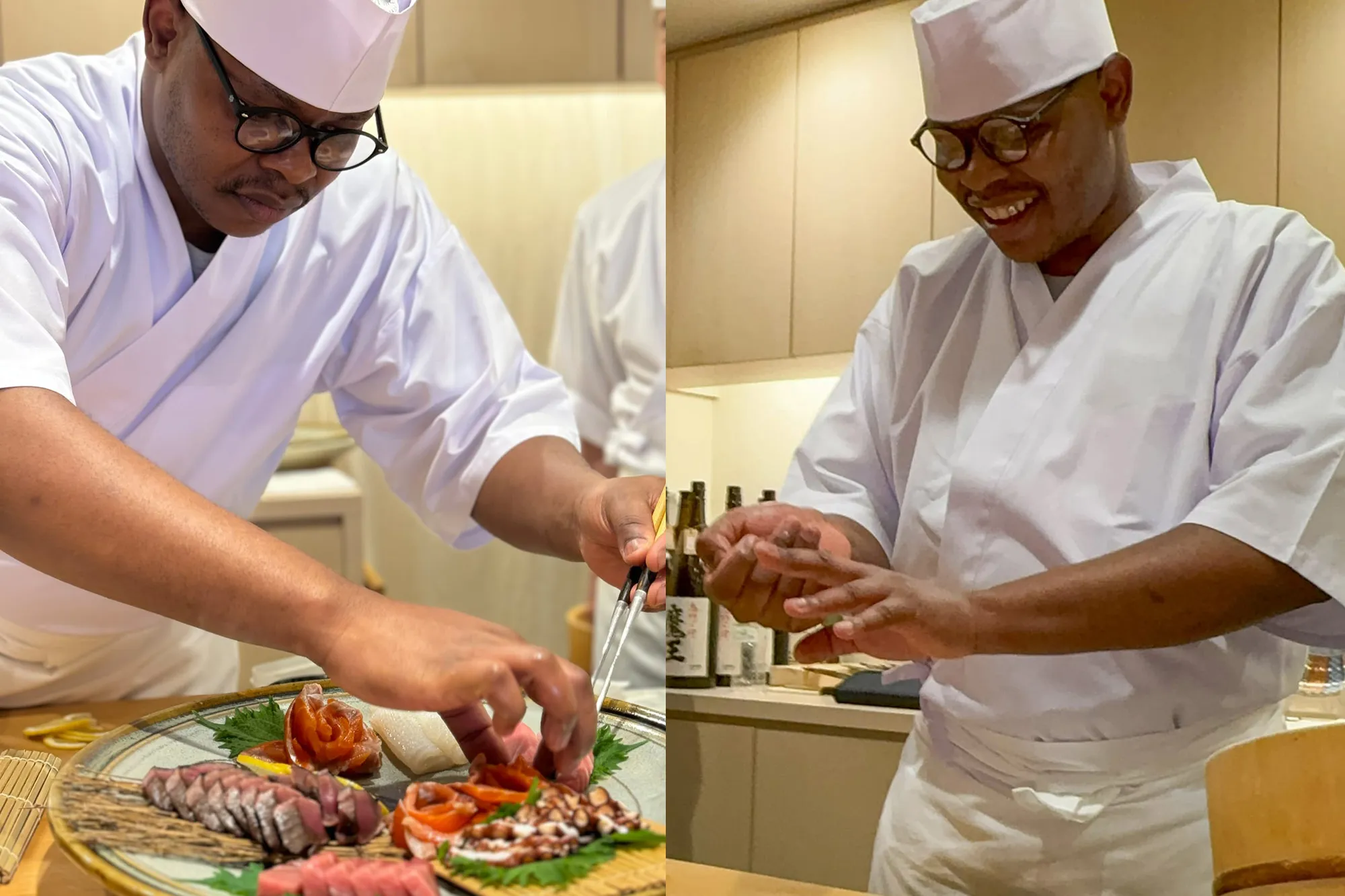Lesson Report: One-Week Izakaya Course
Jun 16, 2024
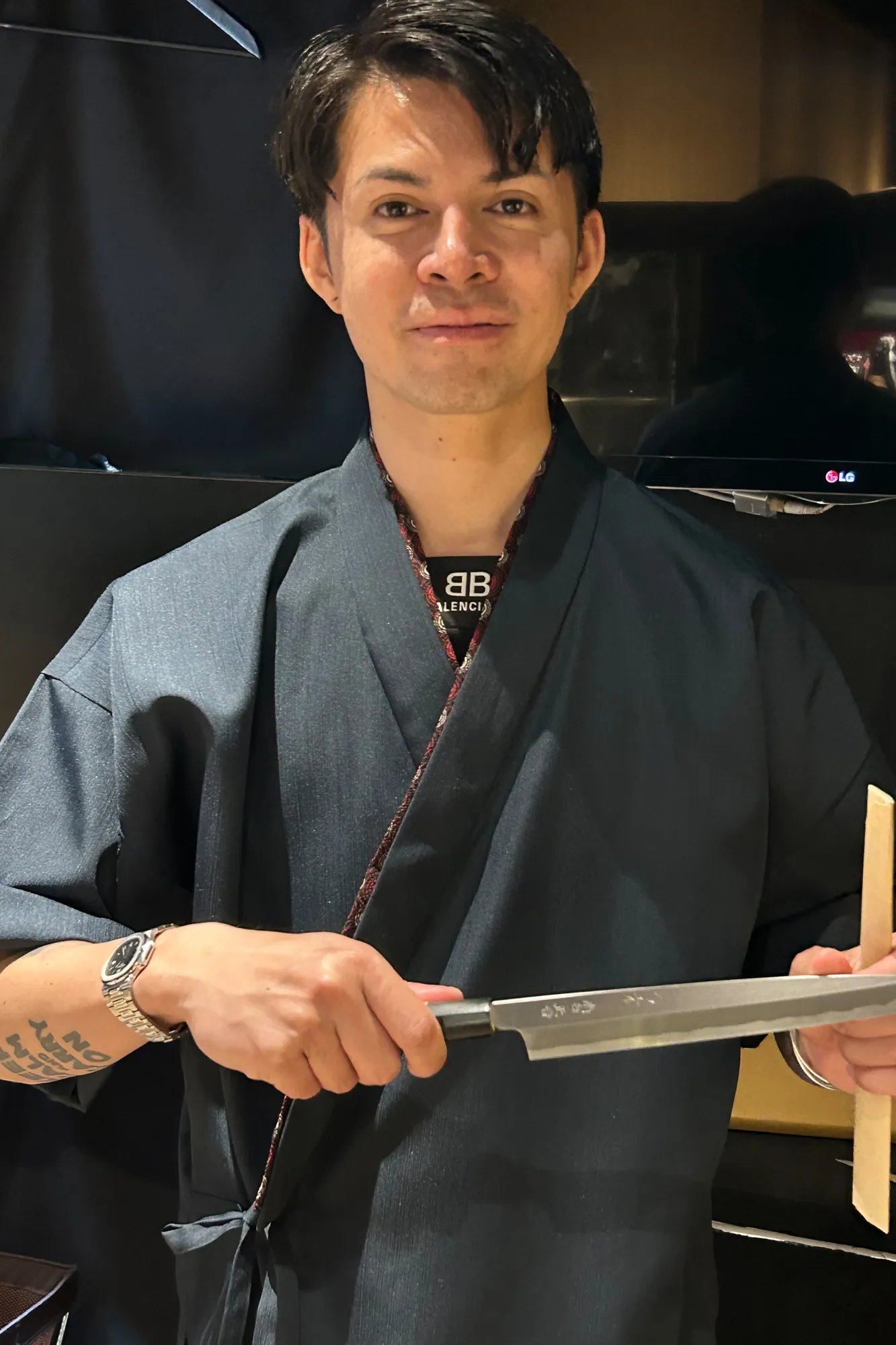
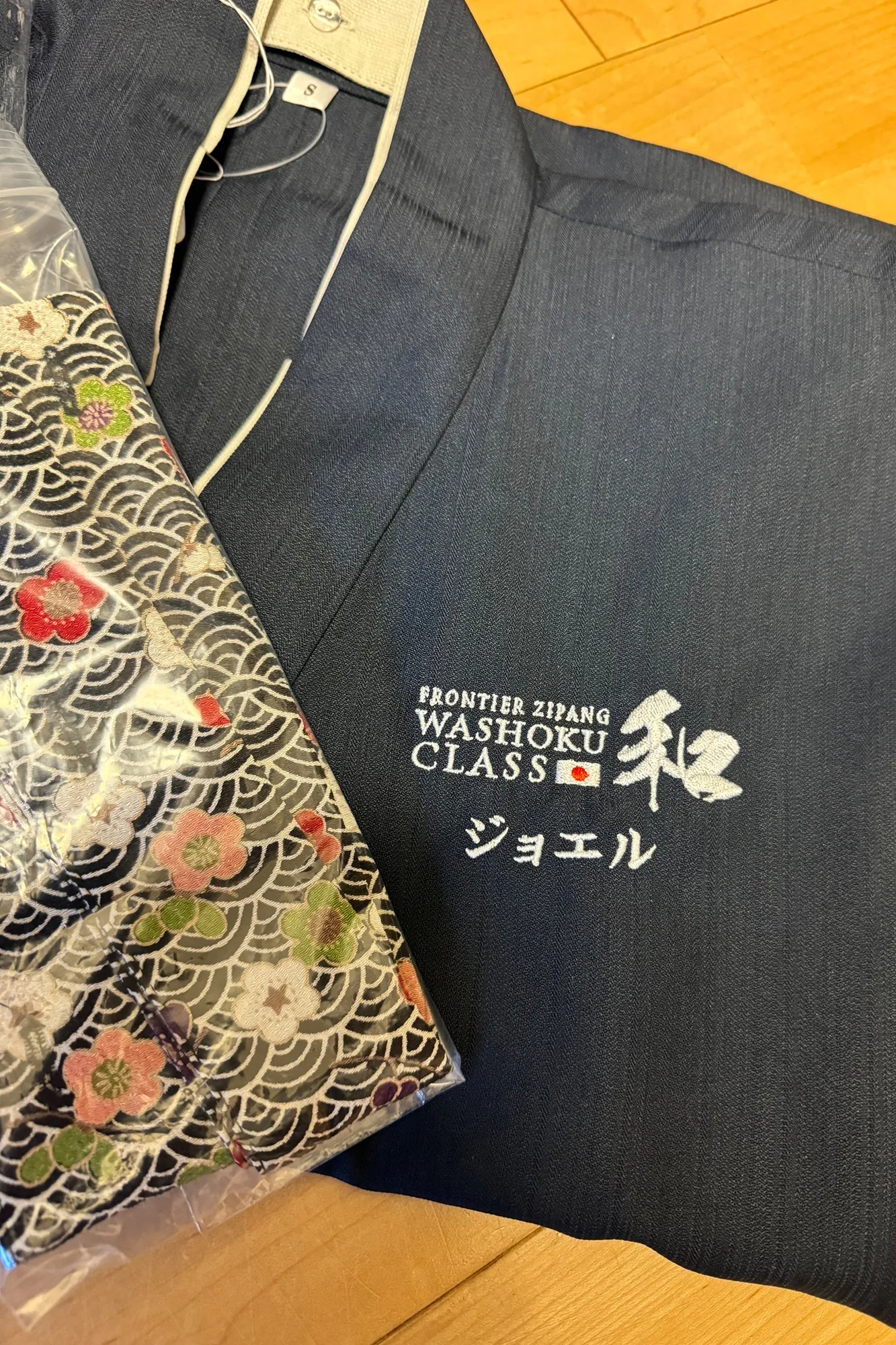
This article highlights the 1-Week Izakaya Course held in May for Joel san, who is from Thailand but now lives in New York, where he runs successful Thai restaurants. As the owner, he oversees the development of new menus and recipes with his chefs. He is now embarking on a new business project and has attended the 1-Week Izakaya Course in addition to the 1-Week Yakitori Course. We hope the course provides him with plenty of inspiration for his new venture.
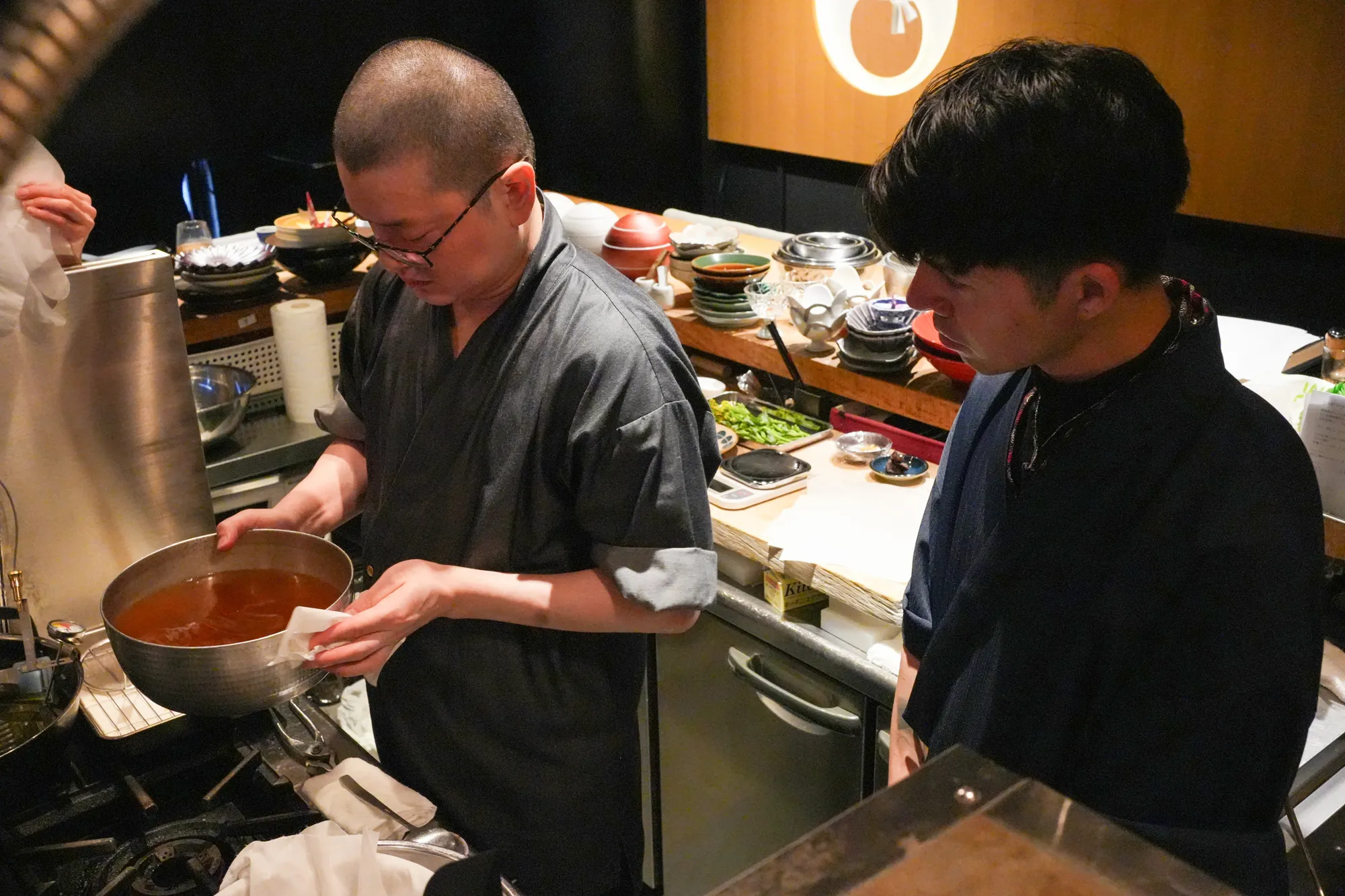
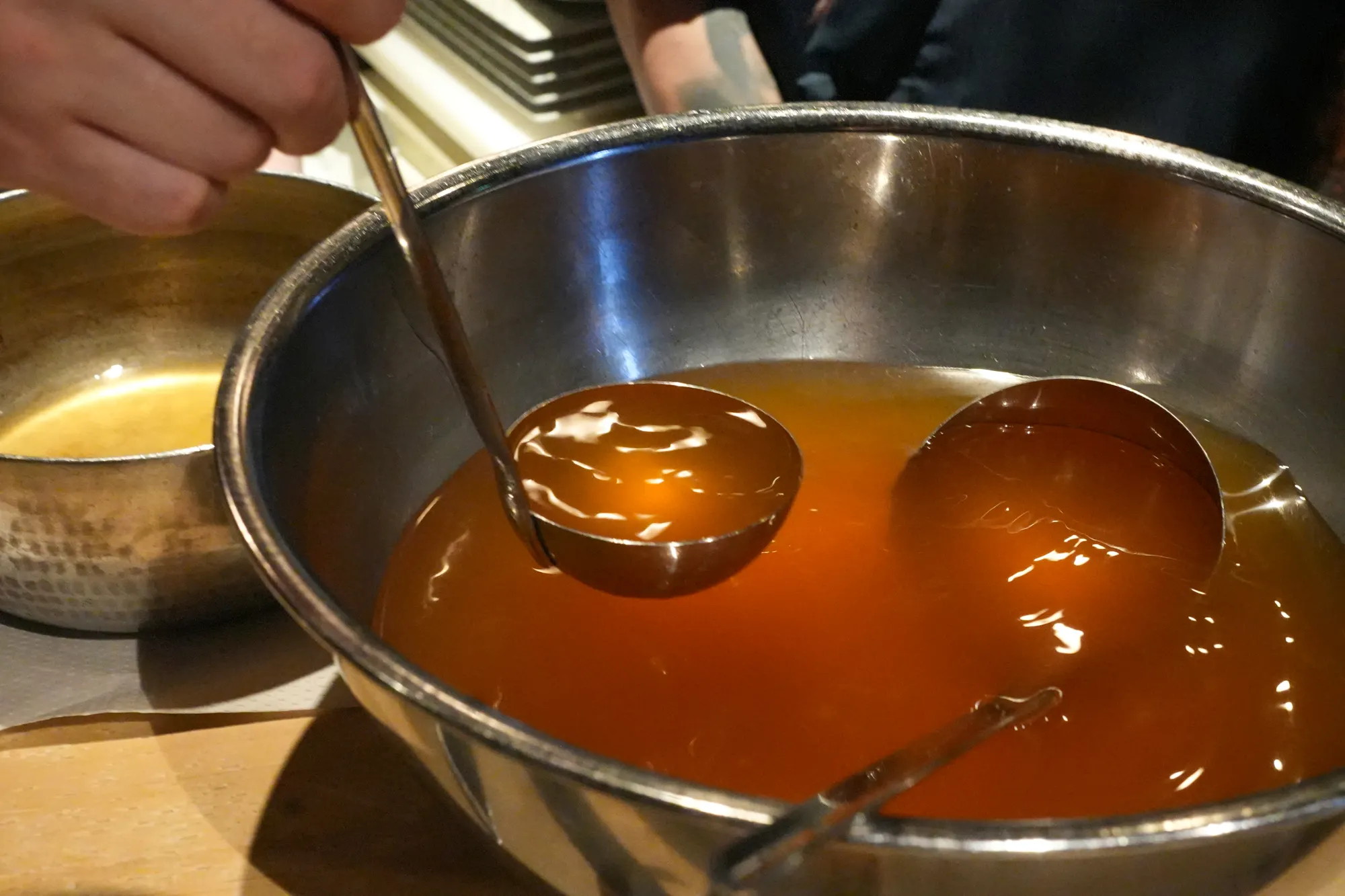
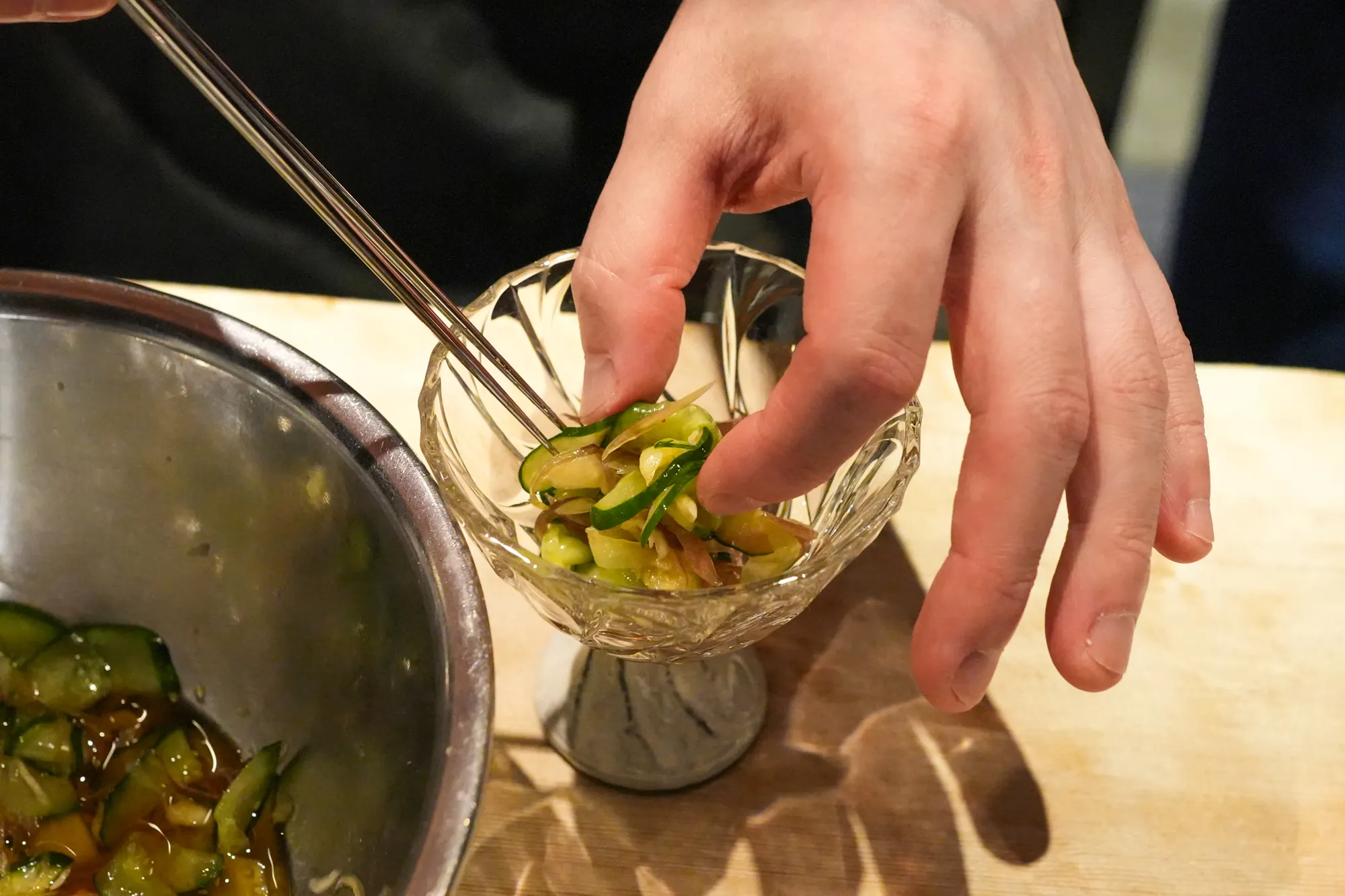
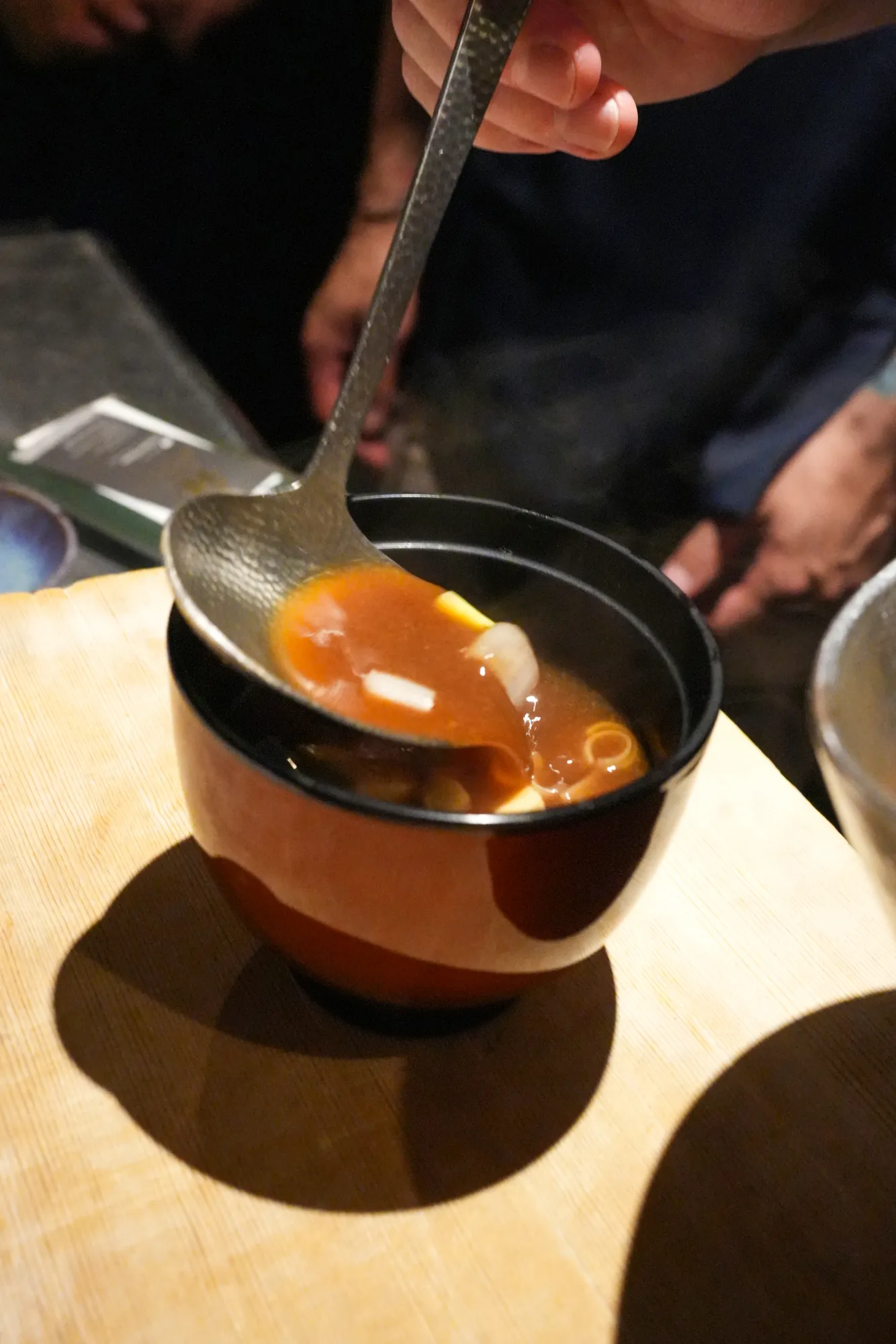
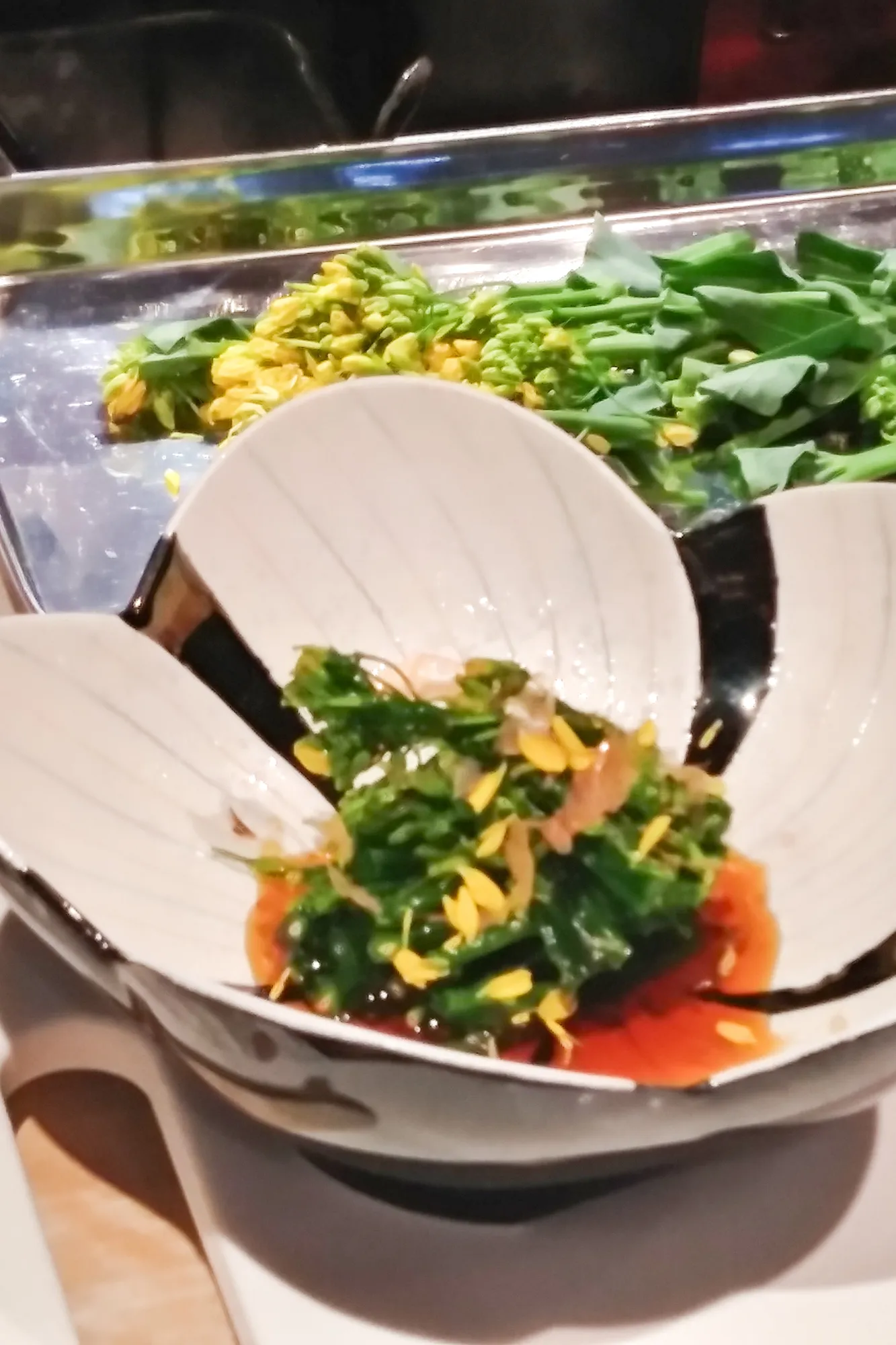
Day 1: ‘Dashi’ (Stock) and dishes made using ‘dashi’
First, Instructor Matsumaru demonstrates both the traditional and the time-saving methods of making stock from kelp and bonito flakes.
Next, using the dashi, Joel san learns how to make miso soup. Broadly speaking, there are two types of miso: white miso and reddish-brown miso. White miso is more familiar to Joel-san than reddish-brown miso, so he tastes both to compare their differences. He also learns that white and reddish-brown miso can be blended together.
Next is ‘ohitashi’ (boiled seasonal greens with soy sauce dressing) and ‘nibitashi’ (seasonal greens simmered in seasoned dashi). Ohitashi can be quickly made using dashi, while nibitashi becomes more flavorful if left in the refrigerator overnight. The student also learns another quick dish, ‘sunomono’ (vinegared myoga ginger and cucumbers). All of these dishes are not only healthy but also refreshing, especially in the hot summer season.
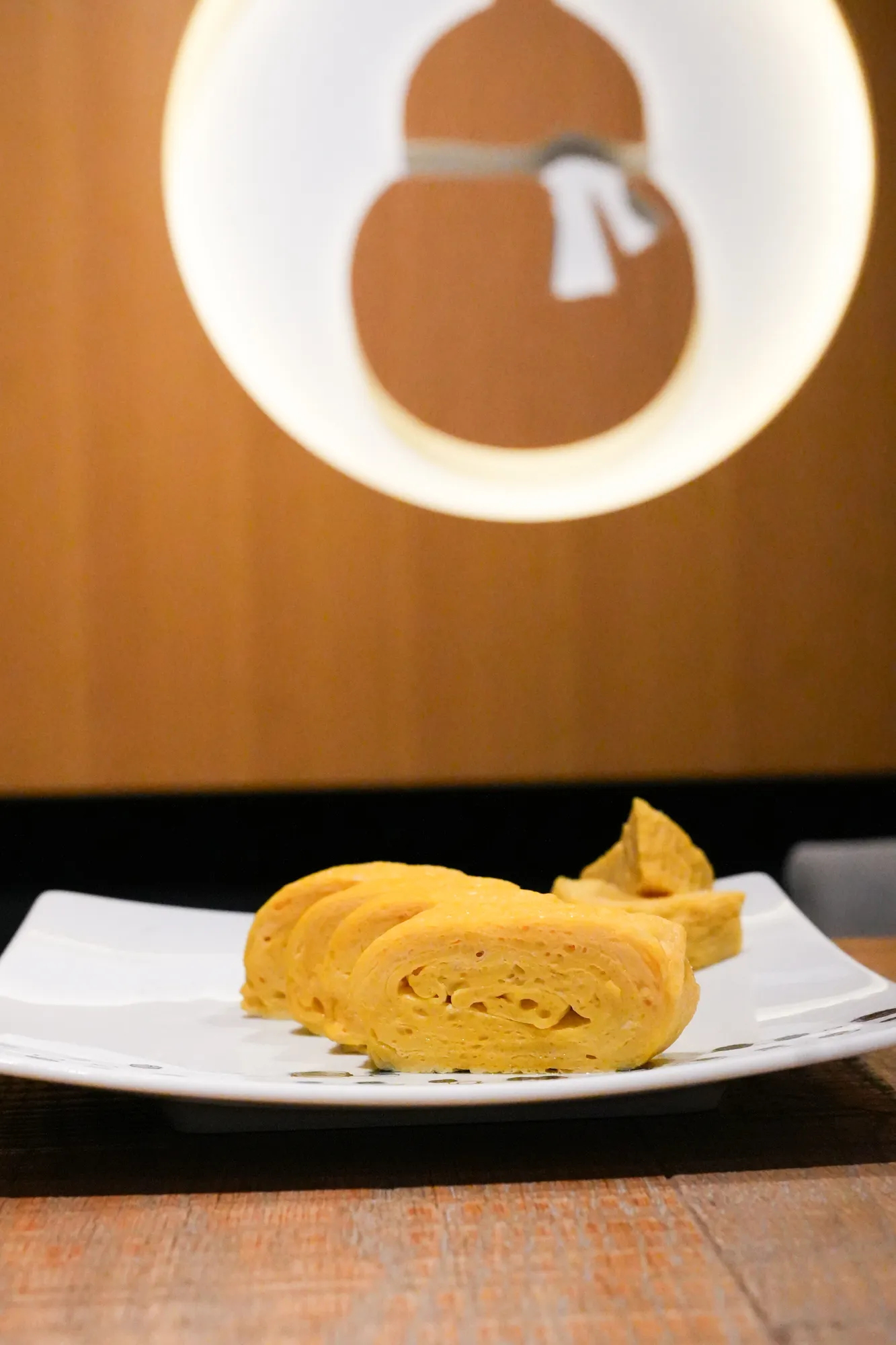

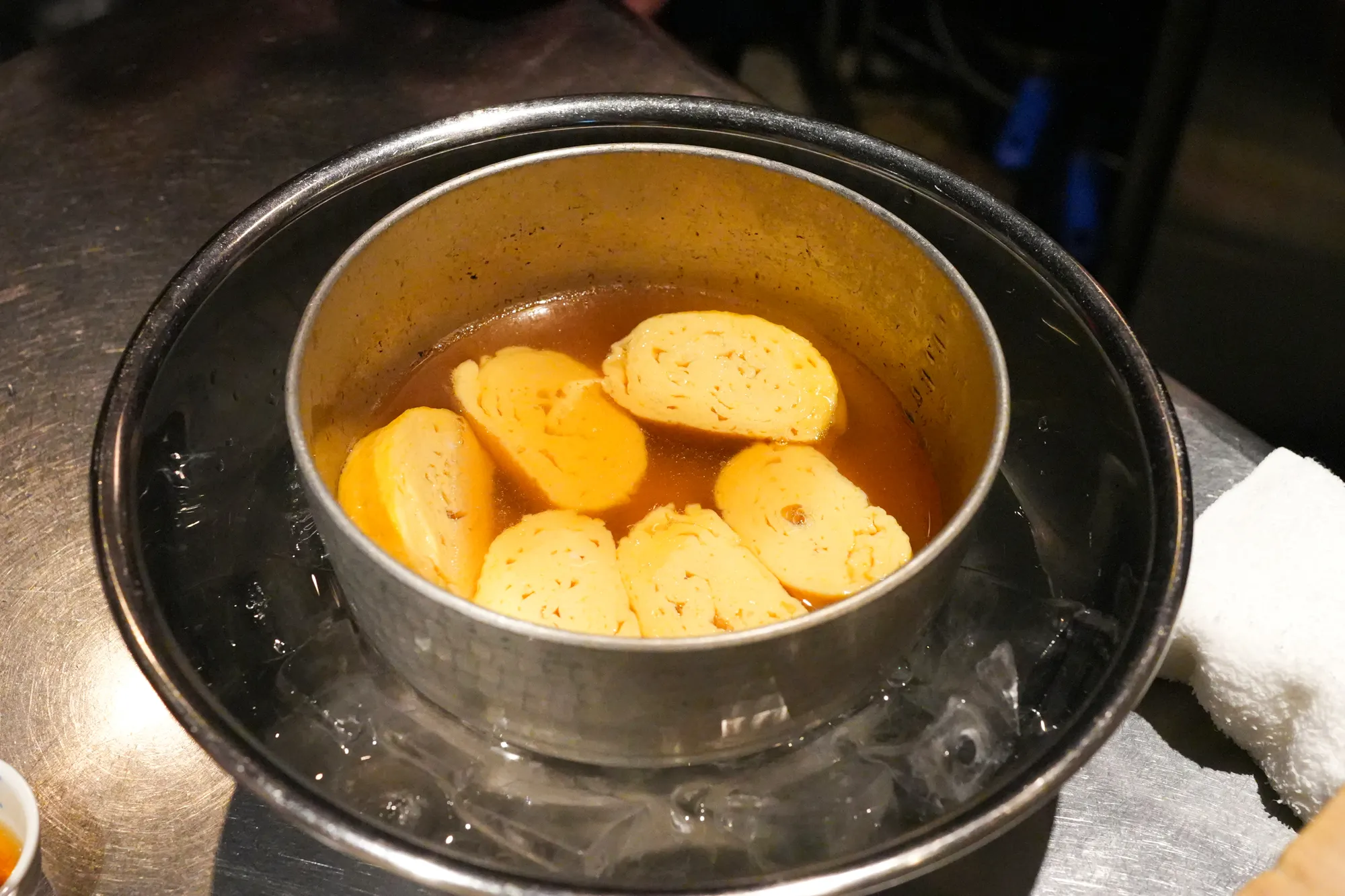
One of the main events in the dashi session is making dashimaki tamago (Japanese-style rolled omelet flavored with dashi). Following Instructor Matsumaru’s demonstration, Joel san makes his first attempt. He uses the chopsticks so skillfully that he is able to roll up the egg and create a well-shaped tamagoyaki! Though he modestly claims that he does not have much culinary experience, Instructor Matsumaru and Yuki are impressed by his skills and potential. He also learns that dashimaki tamago can be enjoyed after being soaked in seasoned dashi overnight and then microwaved before serving.
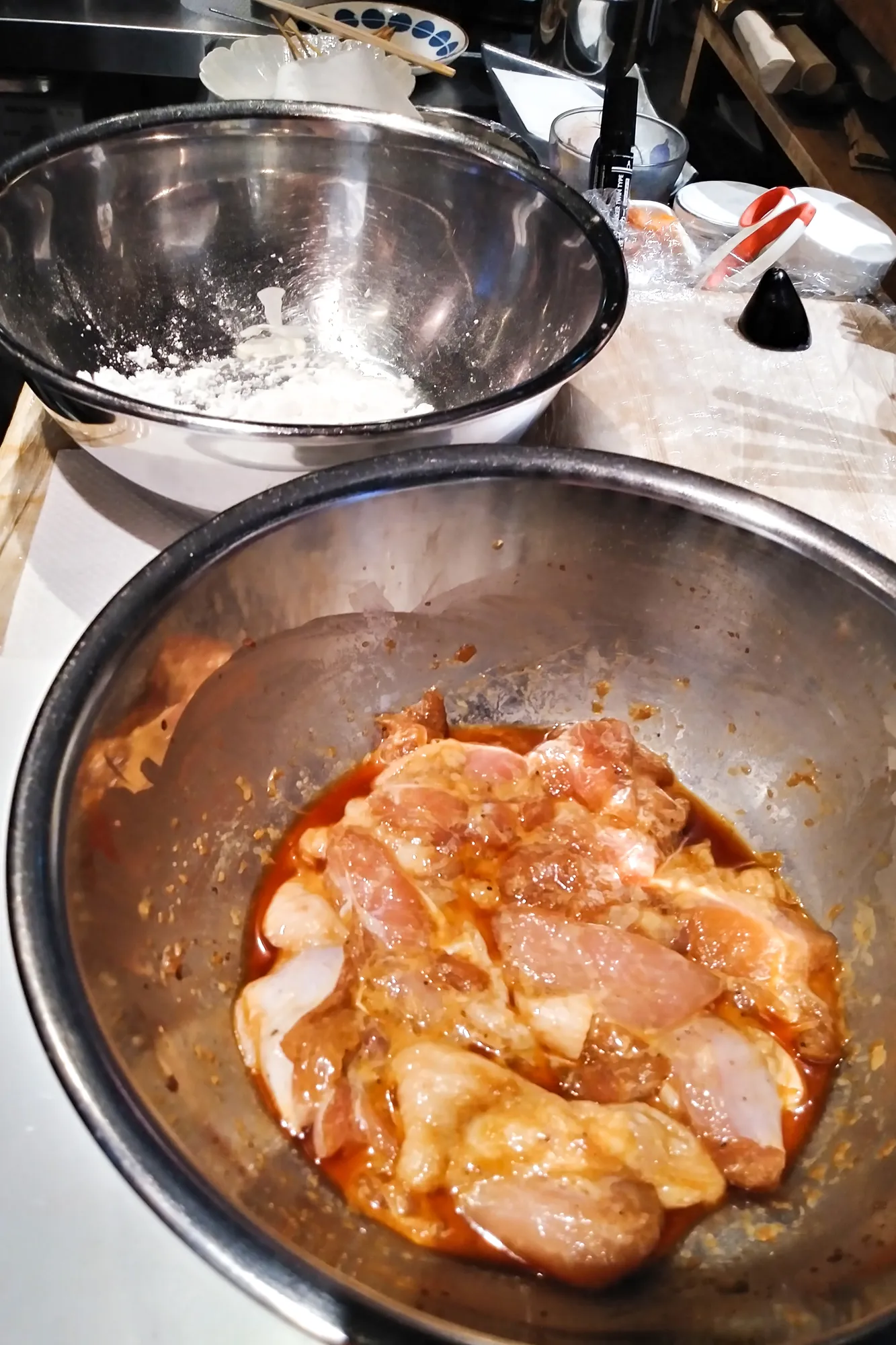
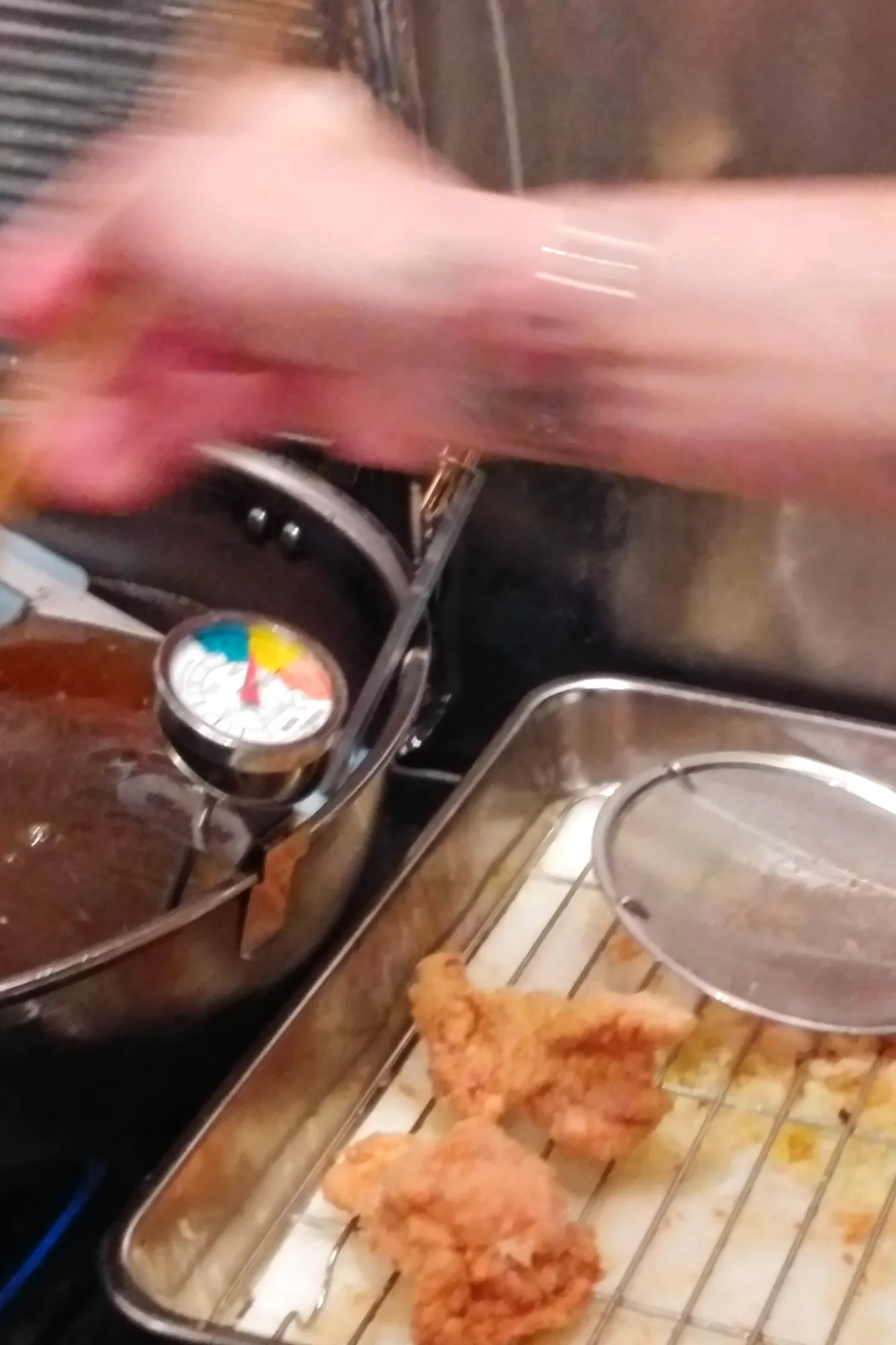
Day 2: Deep-fried dishes
Day 2 addresses popular deep-fried dishes in Japan. The first dish is ‘karaage.’ Key points include marinating chicken in seasonings, double-frying it and knowing how to determine when it is perfectly cooked.
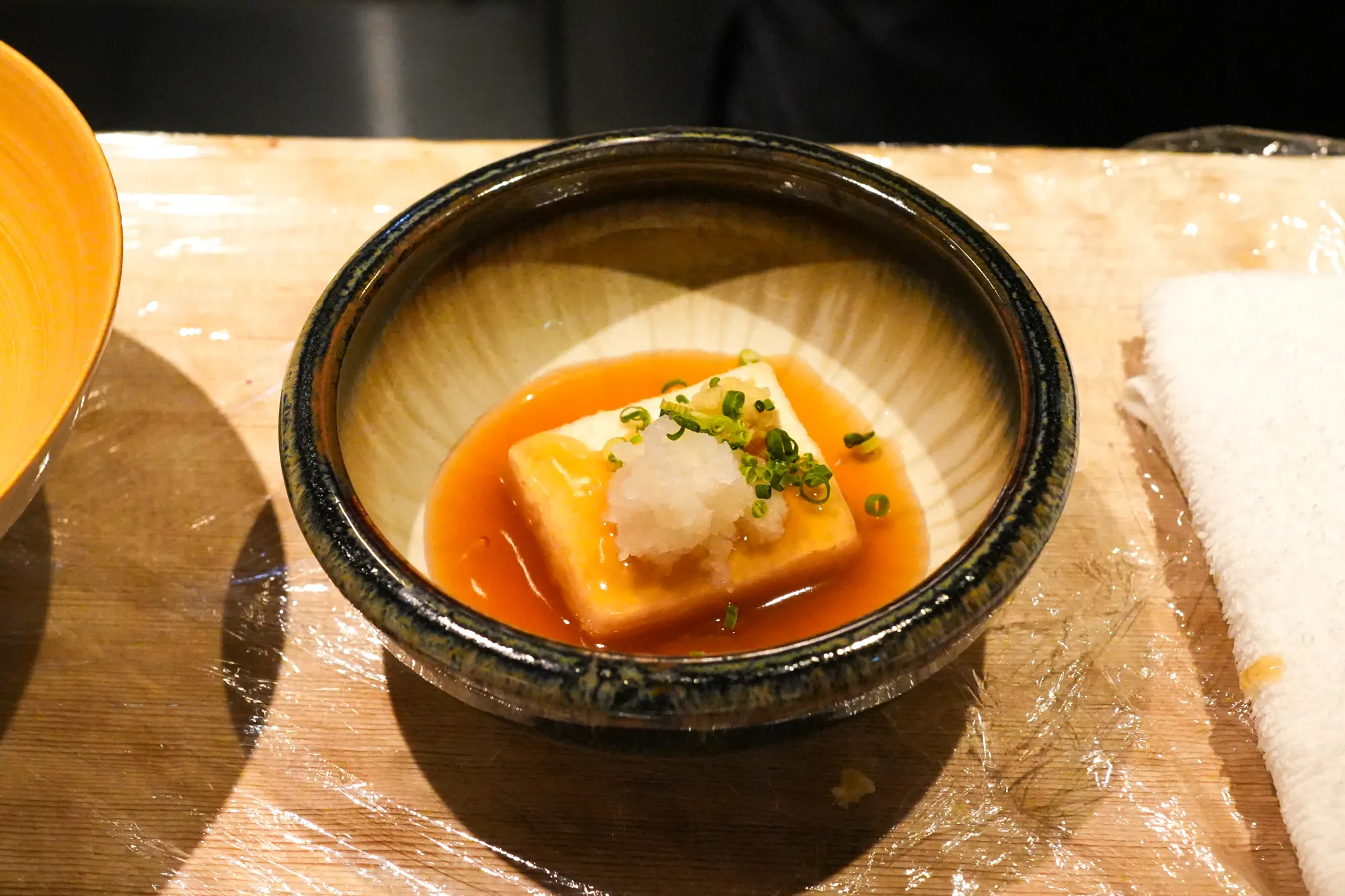
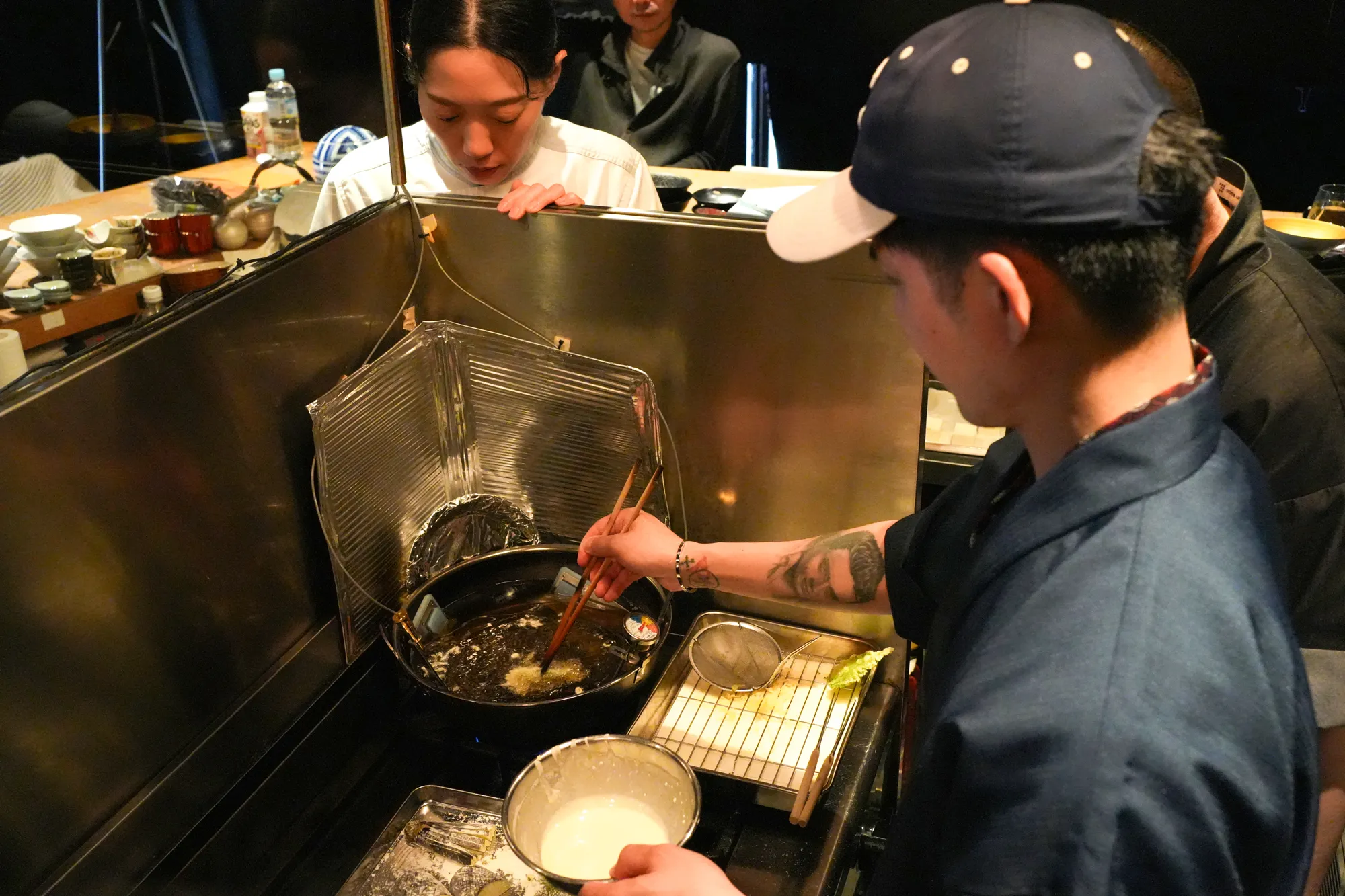
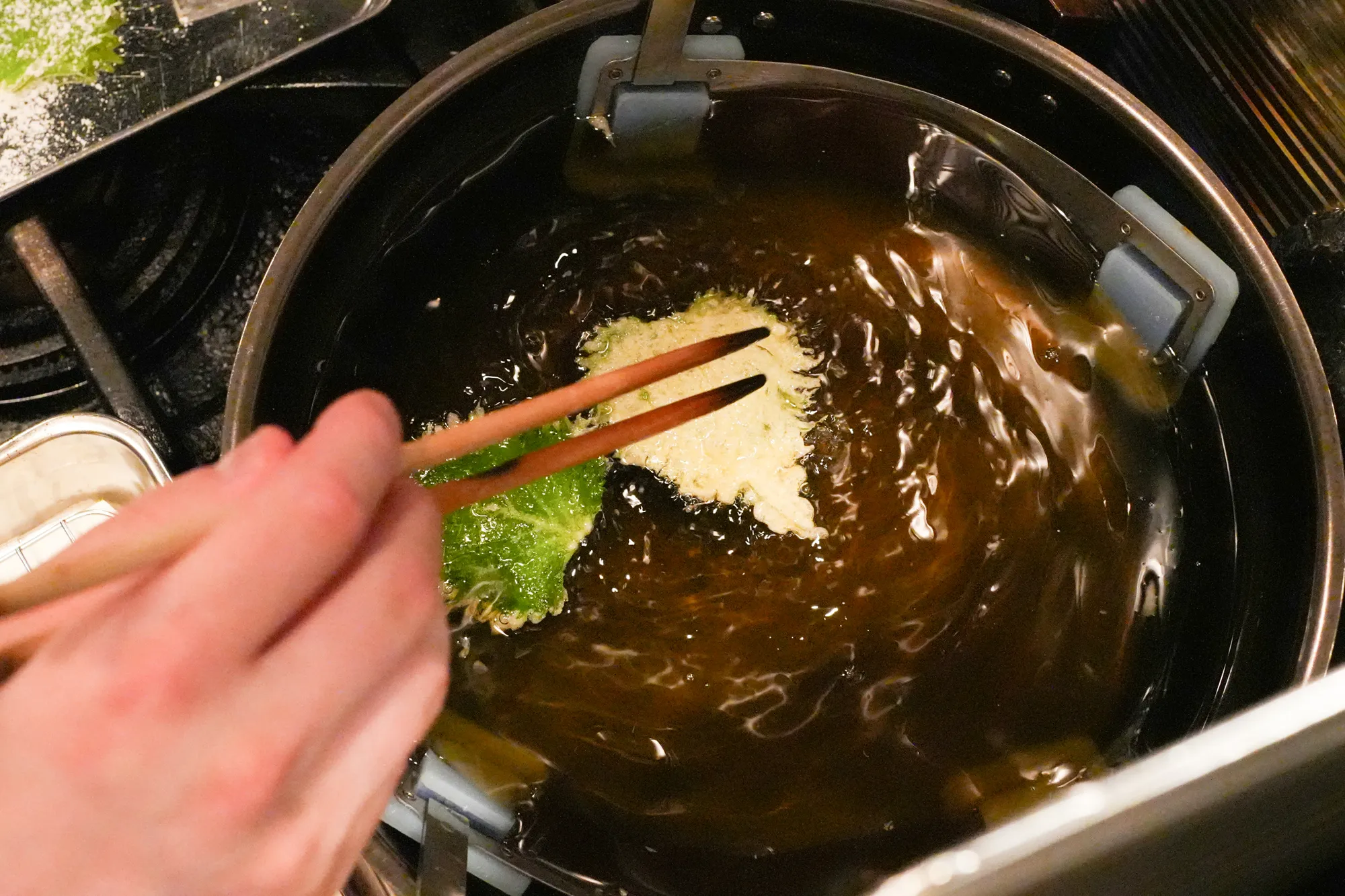

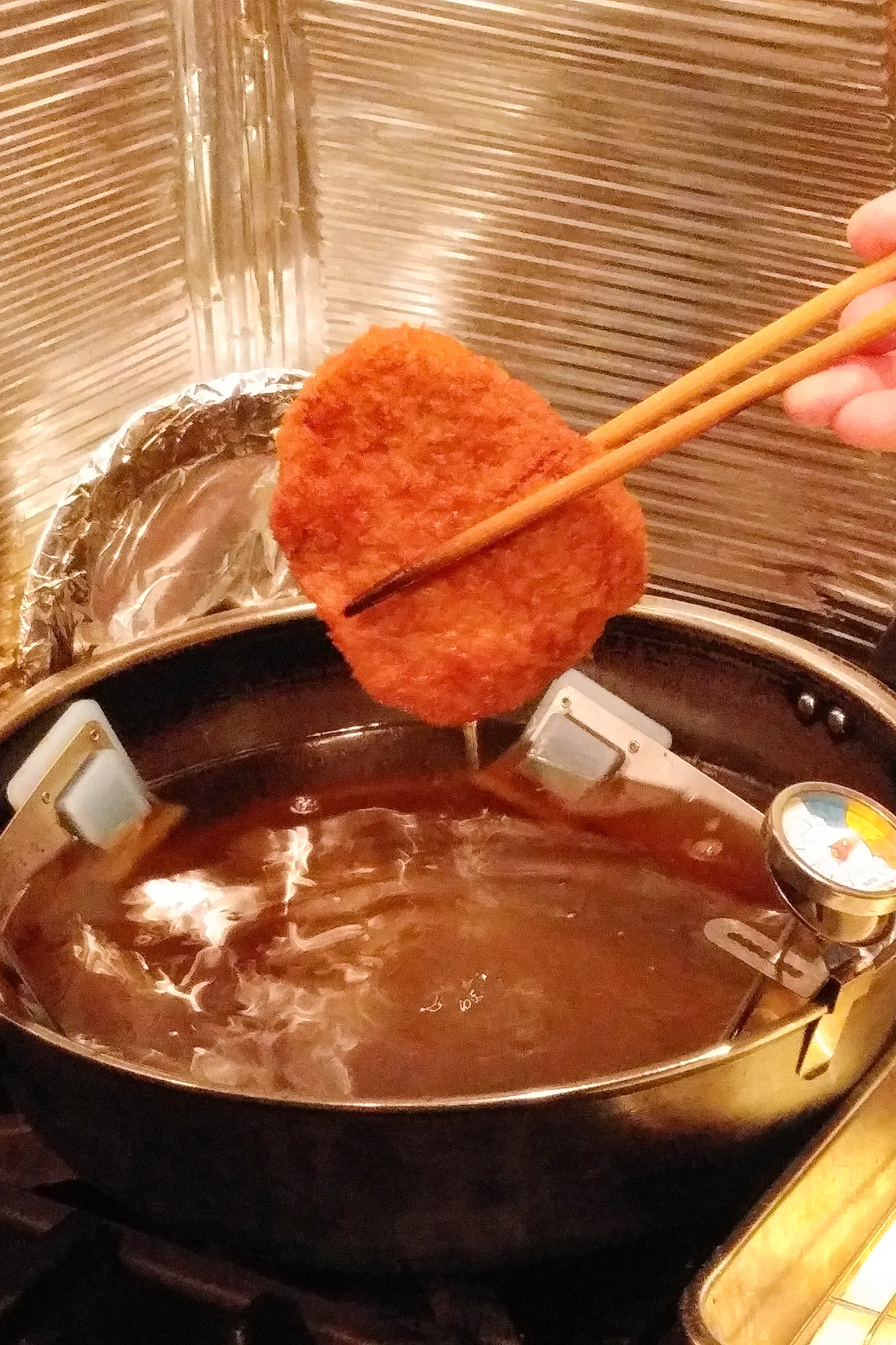
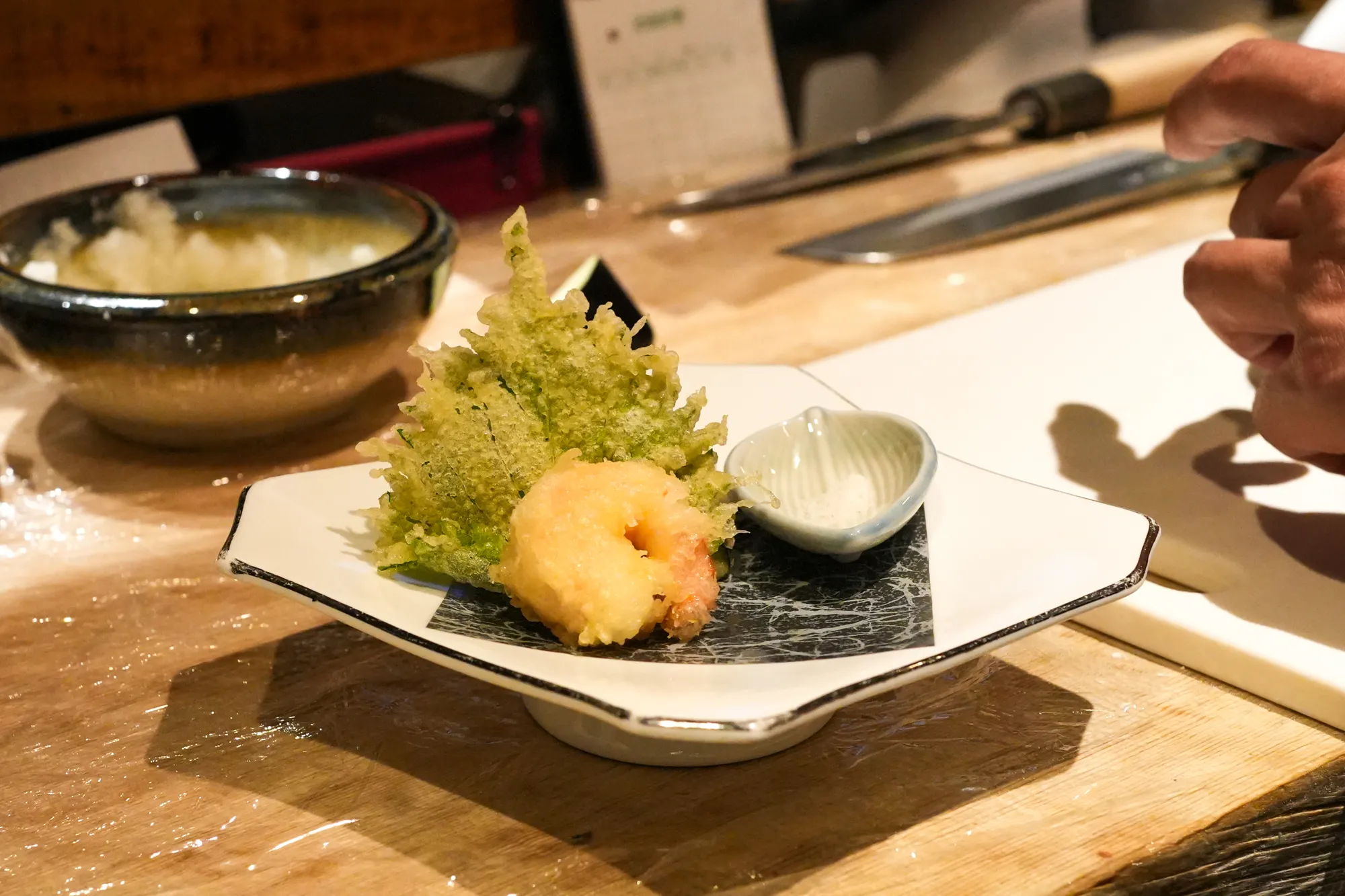

Following karaage is ‘agedashi tofu.’ Joel san tastes lightly fried tofu with seasoned dashi and the one with a thick dashi sauce. Afterwards, he tries to make tempura using Ooba leaves, egg plants, and shrimps. After that, he practices deep-frying ‘tonkatsu’ (deep-fried breaded cutlet of pork) and ‘kushiage’ (deep-fried delicacies on bamboo skewers). Through this session, he learns the effective ways of preparing the ingredients to deep-fry them crispy.
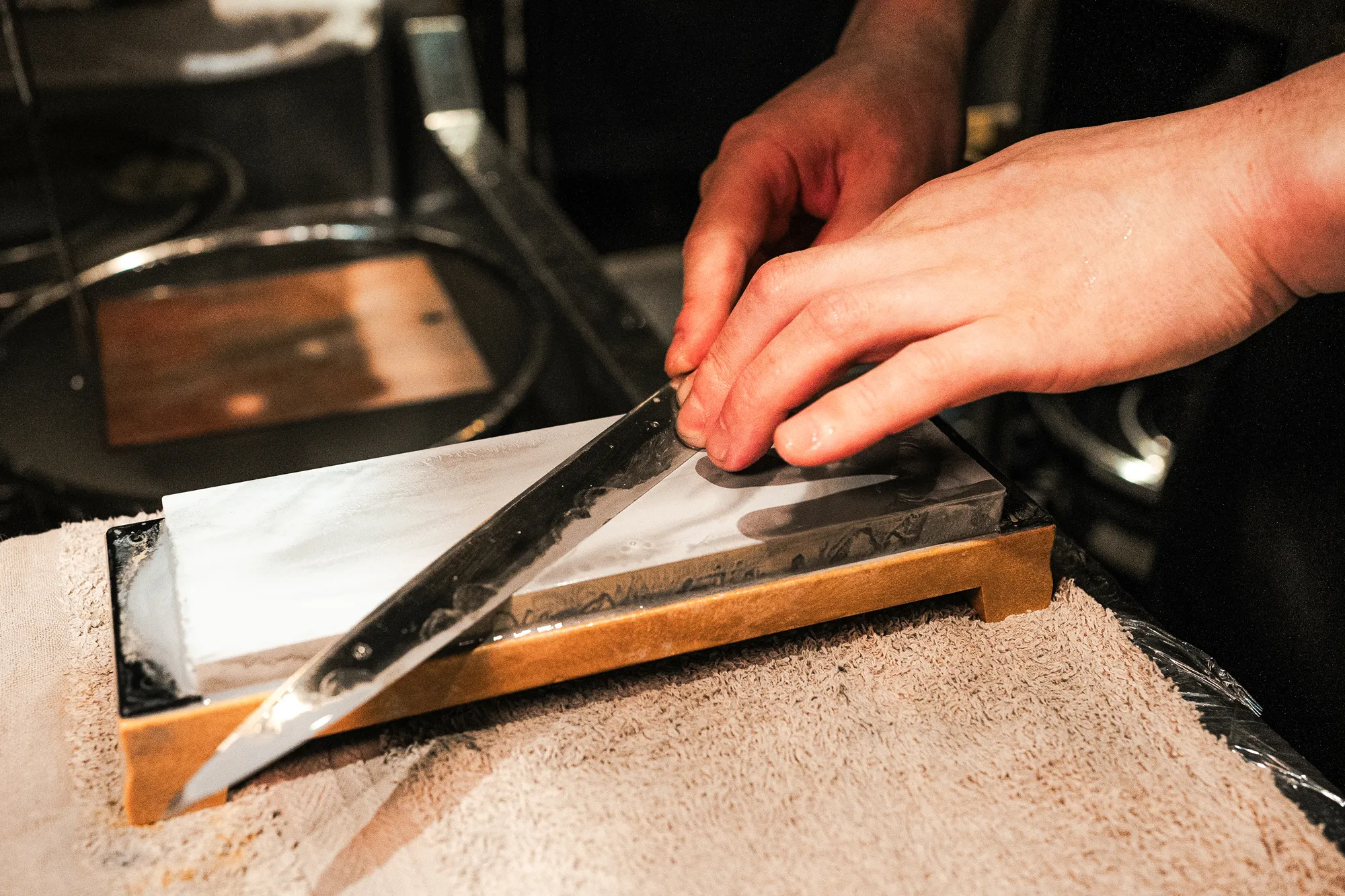
After the session, Instructor Matsumaru gives an extra lecture on how to maintain Japanese kitchen knives. Since Joel-san has purchased a Japanese kitchen knife set from our school, the instructor teaches him not only how to sharpen the knives but also how to take proper care of the whetstone. With regular maintenance, these kitchen knives can last for many years. We hope that Joel-san will continue to use them for a long time.
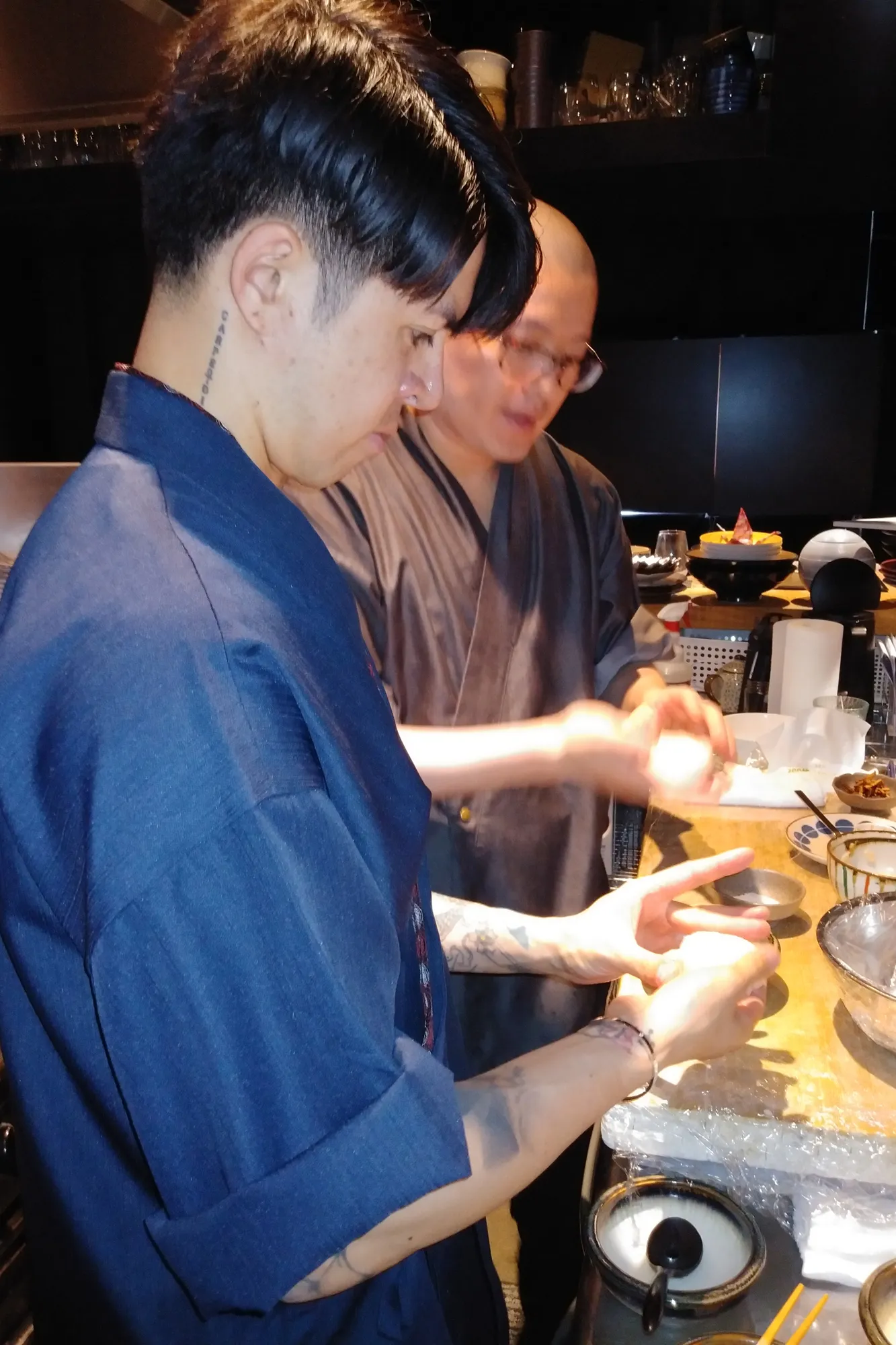
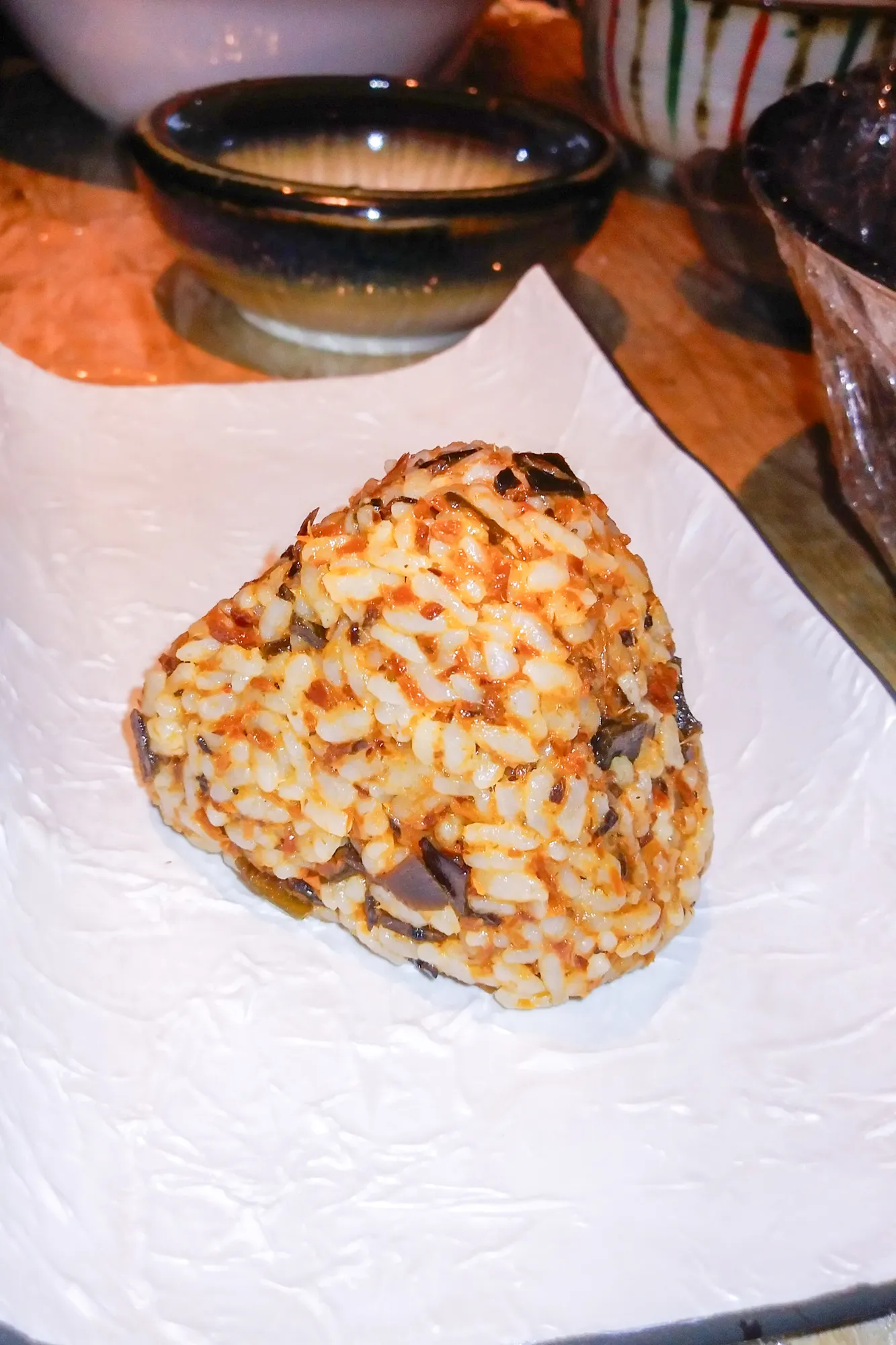
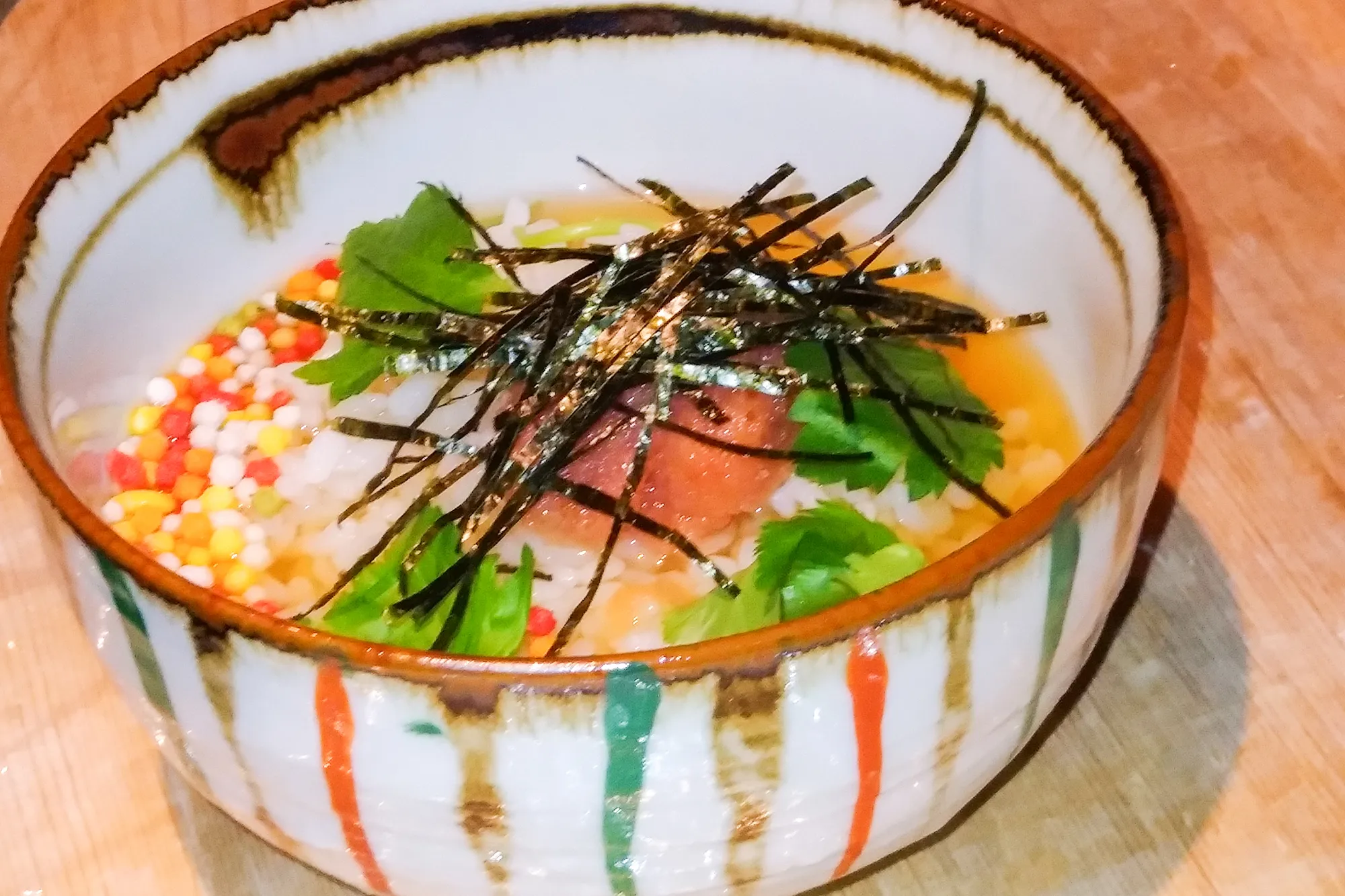
Day 3: Rice and noodles
Day 3 mainly focuses on dishes using rice including onigiri, ‘ochazuke’ (boiled rice soaked with seasoned dashi), udon, yakisoba (fried noodles). Joel san practices making three kinds of onigiri: salted rice balls with no fillings, rice balls with tsukudani (food boiled down in soy), and rice balls made using cooked rice with kelp, bonito flakes, and mayonnaise added.

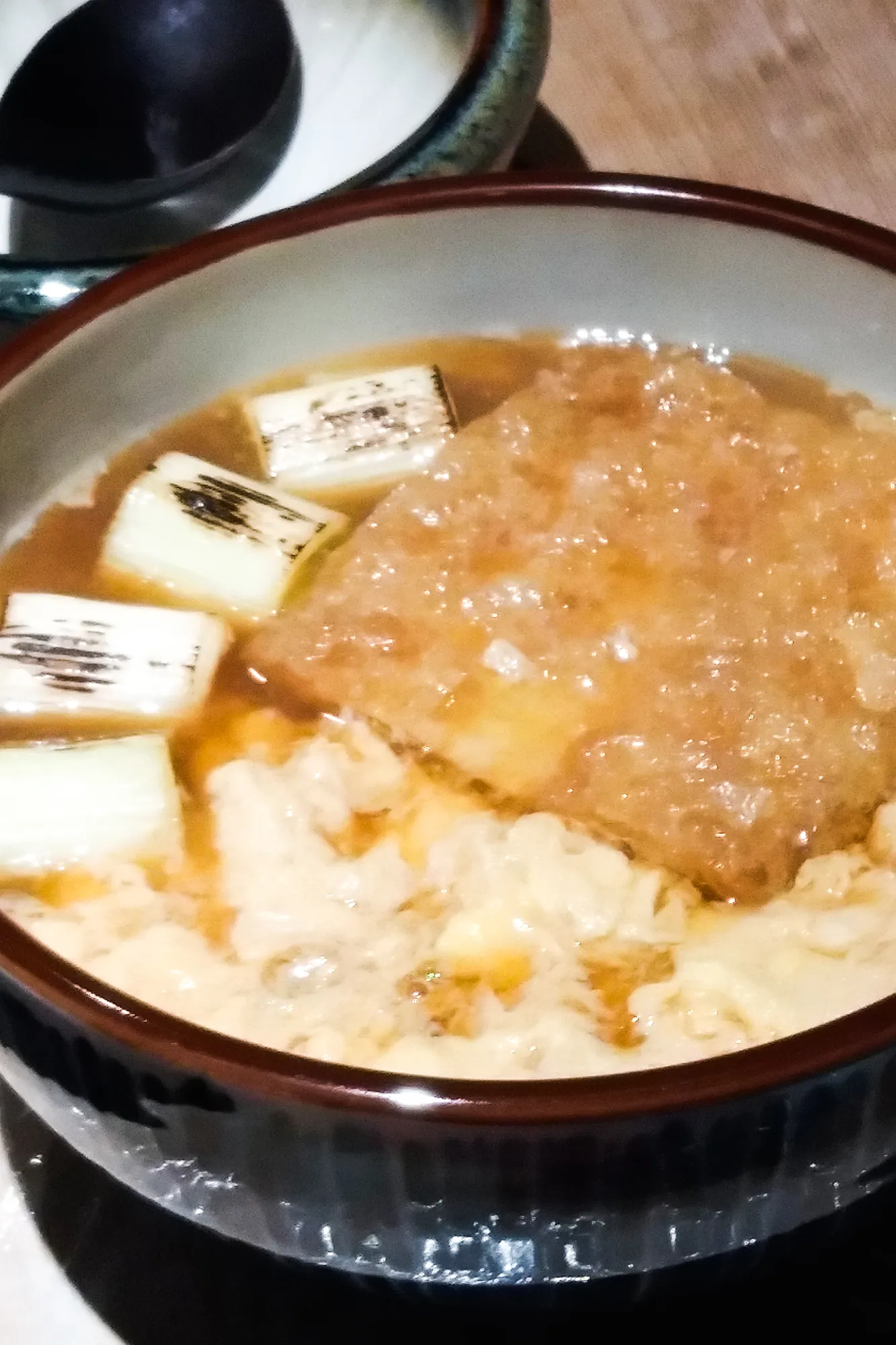
Joel san also shows a strong interest in udon. It’s his first time experiencing cold udon with a cold dipping sauce, made using seasoned dashi, and he finds it particularly refreshing in the summer season. Next, he tries a warm version of ‘kitsune’ udon (udon noodles topped with deep-fried tofu) with beaten egg, as well as ‘tanuki’ udon (udon noodles topped with fried tempura batter). Besides that, Instructor Matsumaru prepares various soups for udon, including dark-colored, light-colored, strong-flavored, and light-flavored options, helping Joel-san discover his preferred type of udon soup. This session introduces Joel-san to a variety of soups and toppings that can accompany udon.


Food pairing with Japanese sake
Now, it is time to attend Instructor Yuki’s session on food pairing with Japanese sake. Joel-san tastes ‘junmai’ (sake made from only rice and yeast), ‘junmai ginjo’ (sake with no added alcohol, with rice grains polished to at least 60% of their original size), and ‘junmai daiginjo’ (sake with no added alcohol, with rice grains polished to at least 50% of their original size) to compare their differences. Following that, he tries each sake again paired with appetizers, raw fish, and fried oysters. Joel san is delighted to discover during this session that some sake pairs well with light-flavored appetizers, while others complement greasy foods or dishes with stronger flavors.
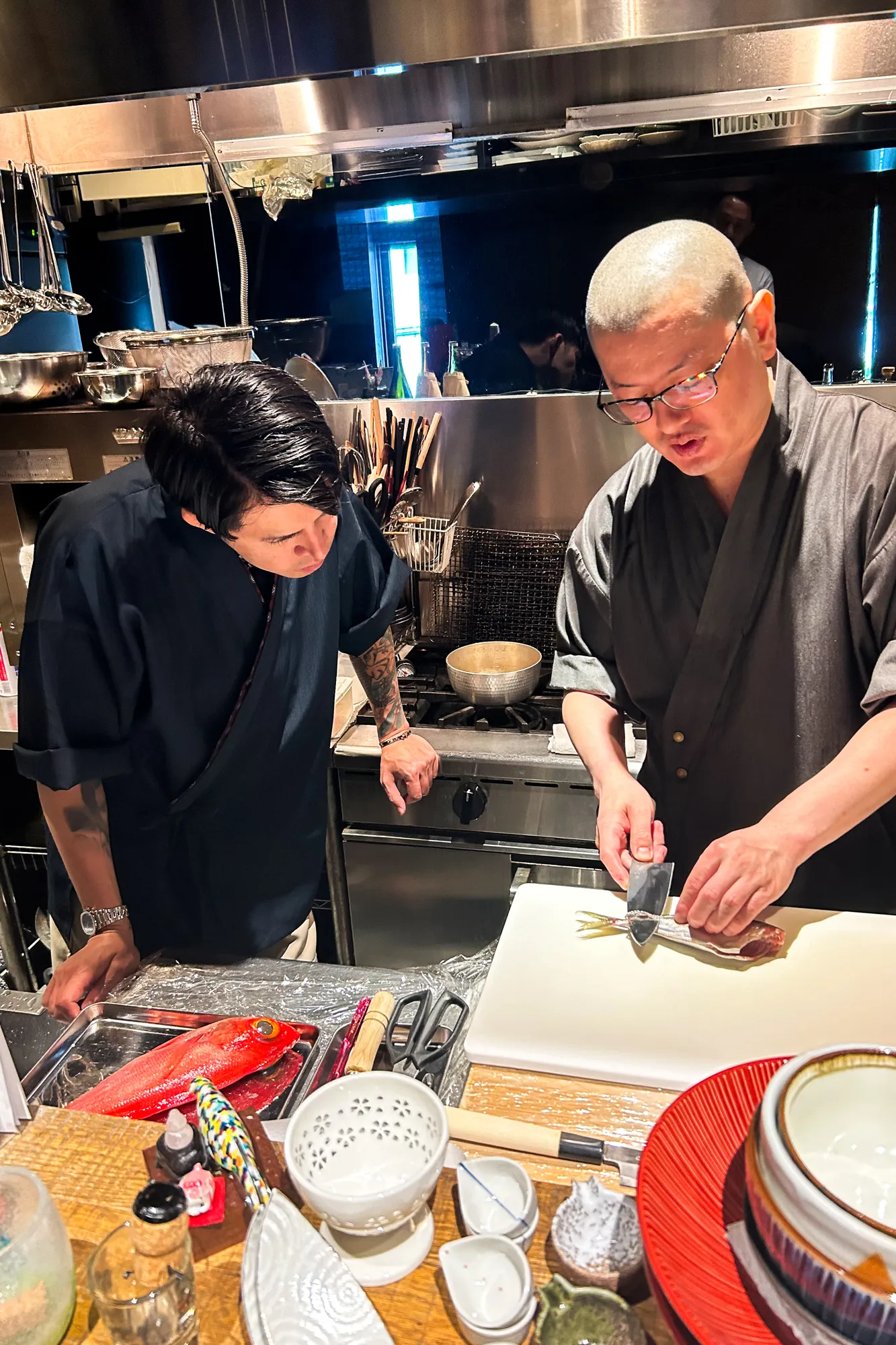
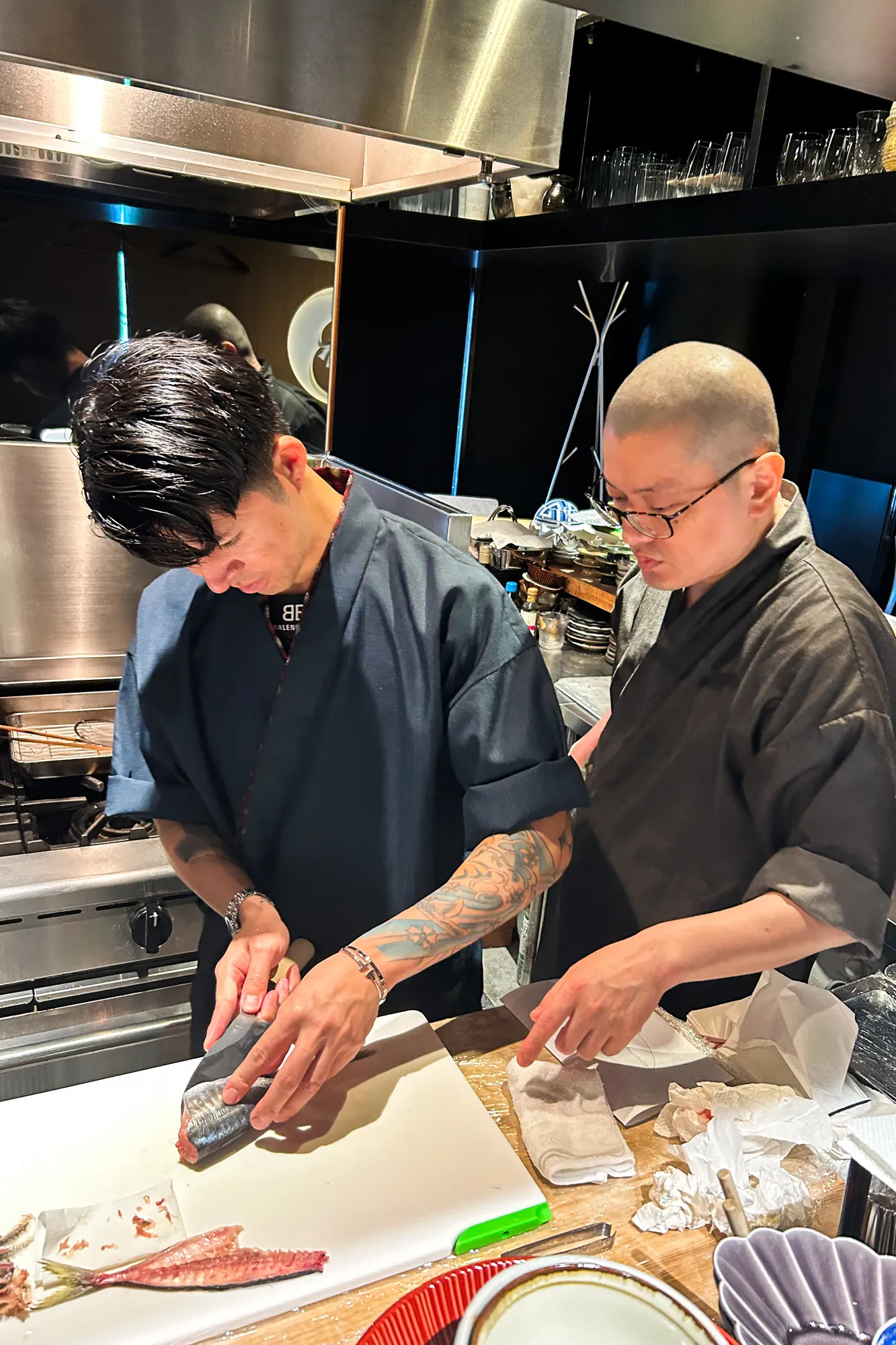
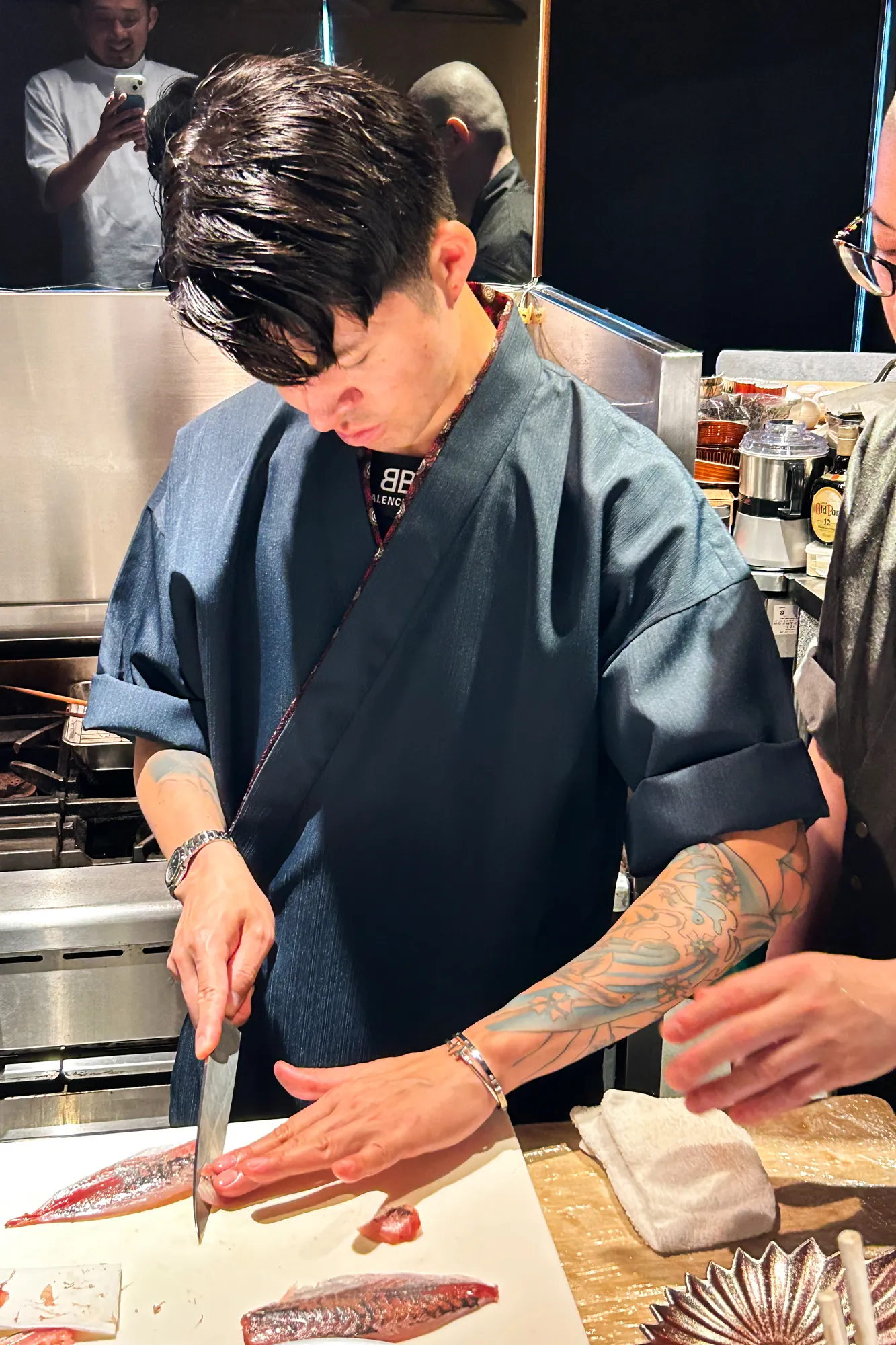
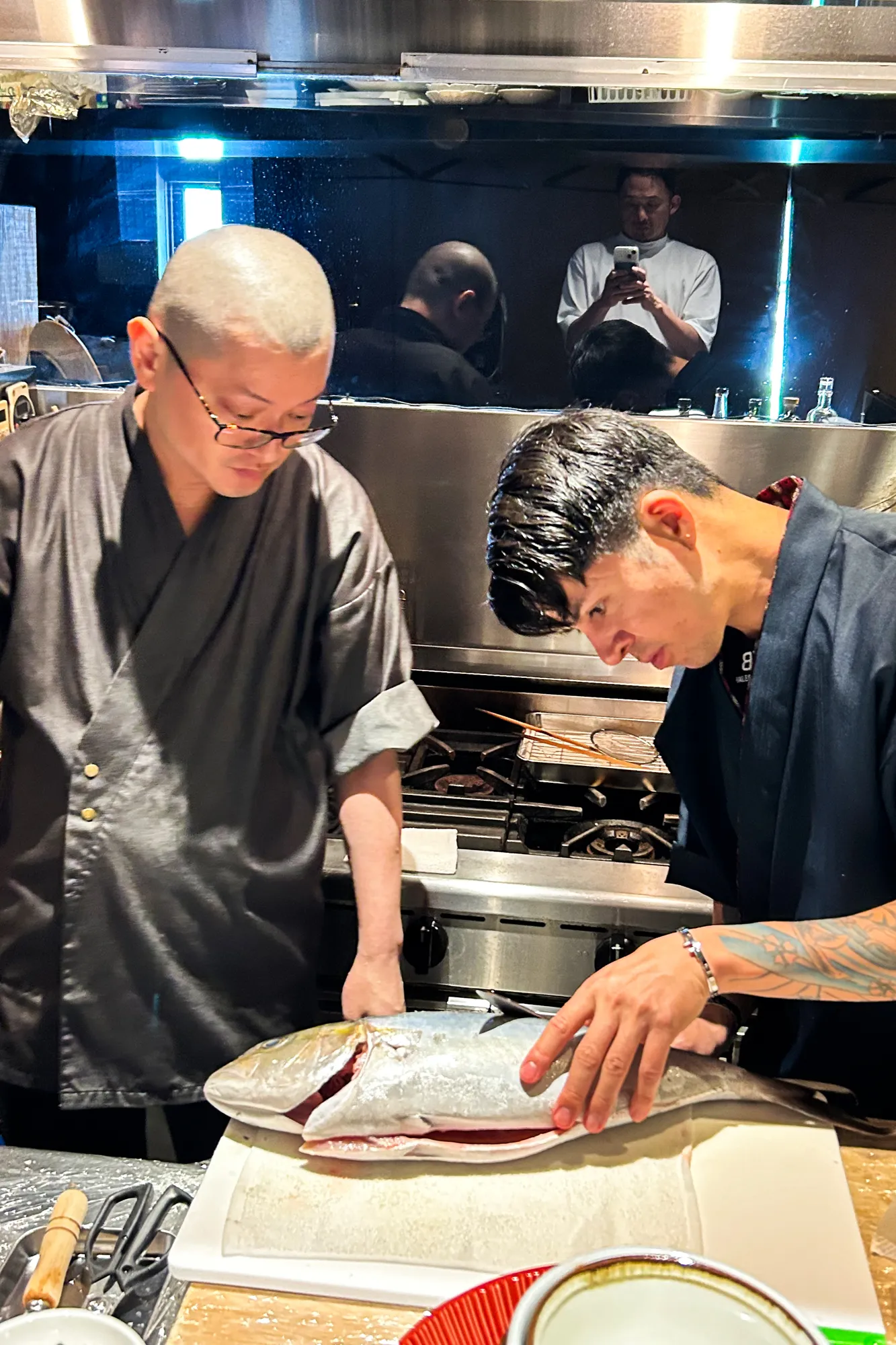
Day 4: Sashimi + optional fish filleting practice
Day 4 is scheduled for learning sashimi (slices of raw fish), but at Joel san’s request, we offer an optional fish filleting practice session. First, he observes Instructor Matsumaru’s demonstration of filleting aji (horse mackerel) and kinme (red bream). The instructor uses illustrations and provides step-by-step instructions to help him deepen his understanding. He also teaches essential knowledge and secrets about hygiene, preserving fresh fish for a long time, and knife skills. Thanks to the instructor’s guidance, Joel san fillets the fish so well that it is hard to believe he has only done it once before.
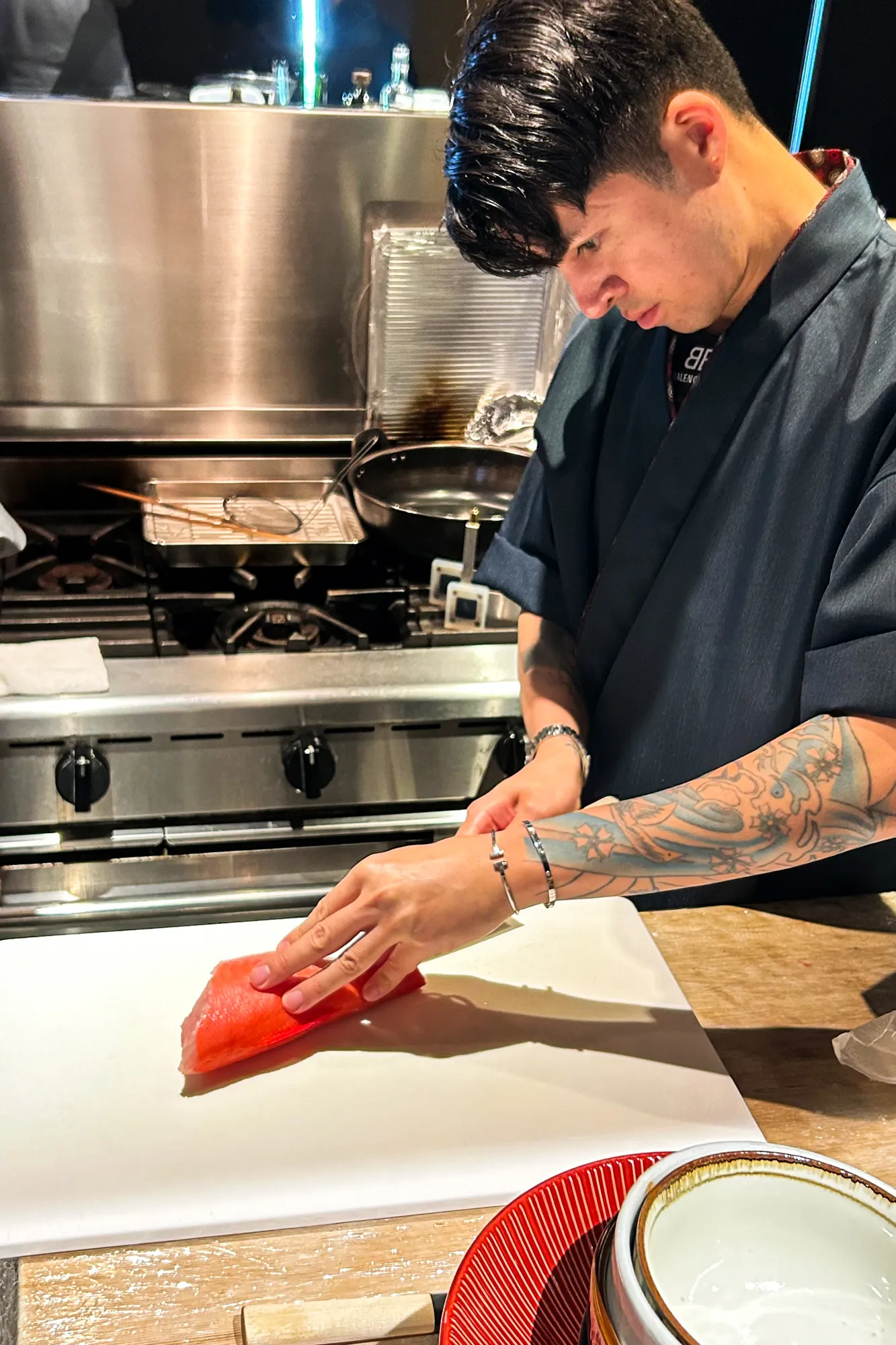

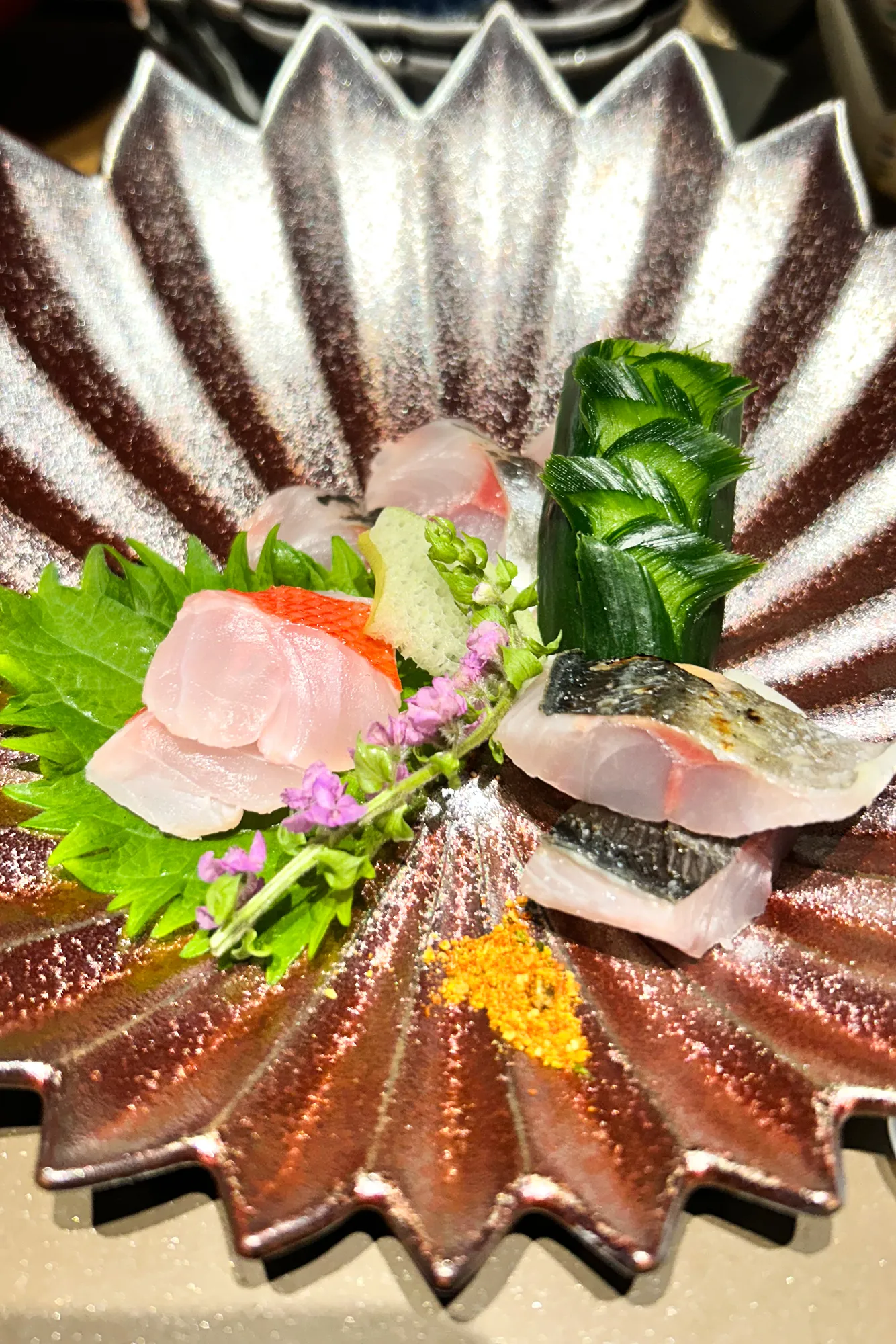
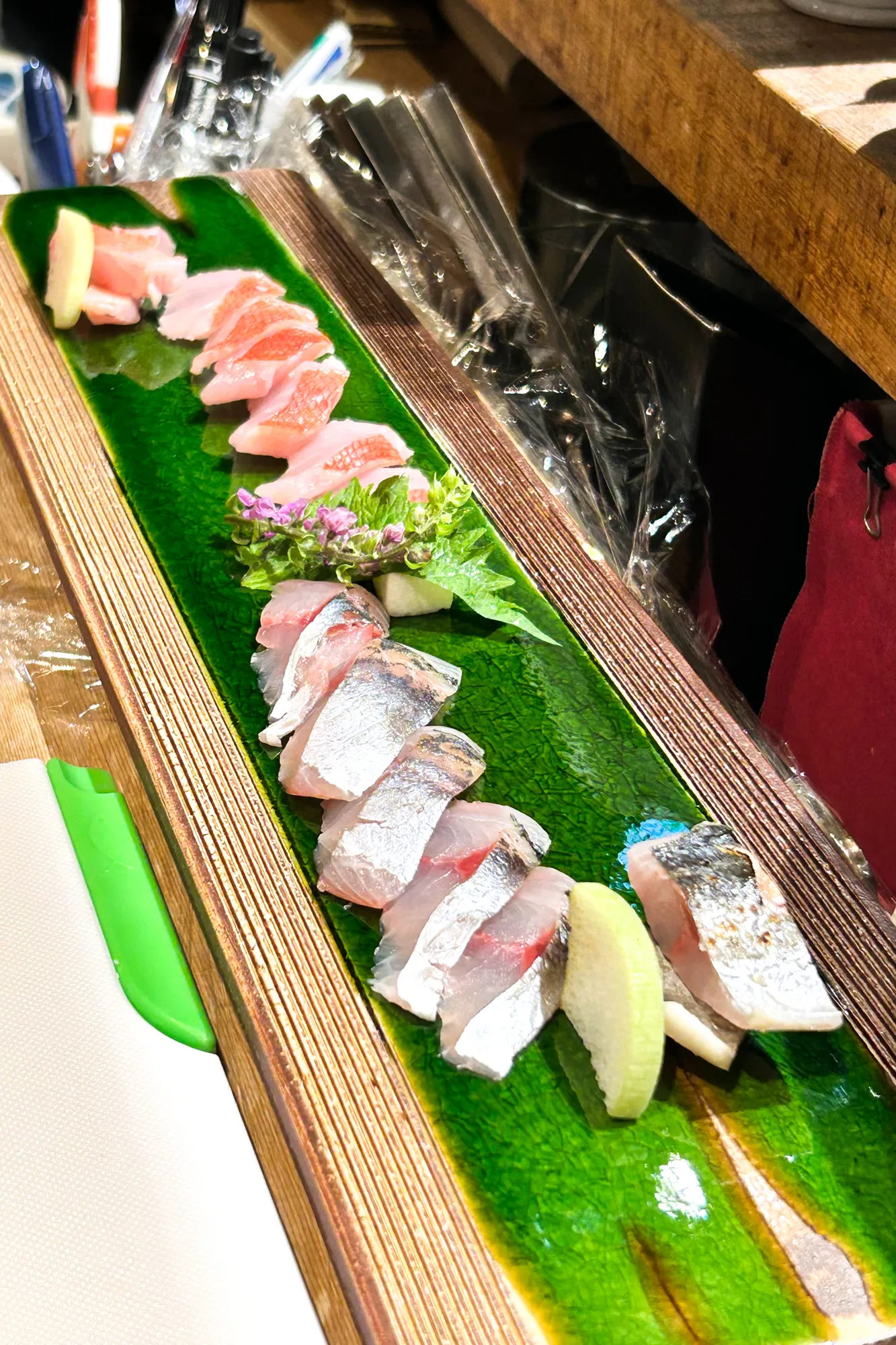
After that, he makes sashimi using the fish he has filleted. Instructor Matsumaru teaches him not only the knife skills needed to slice sashimi beautifully and the presentation techniques, but also the fundamental principles for plating and serving sashimi to customers, all rooted in traditional Japanese culinary culture. We hope that he not only masters these techniques but also gains a deeper appreciation of Japanese culture.
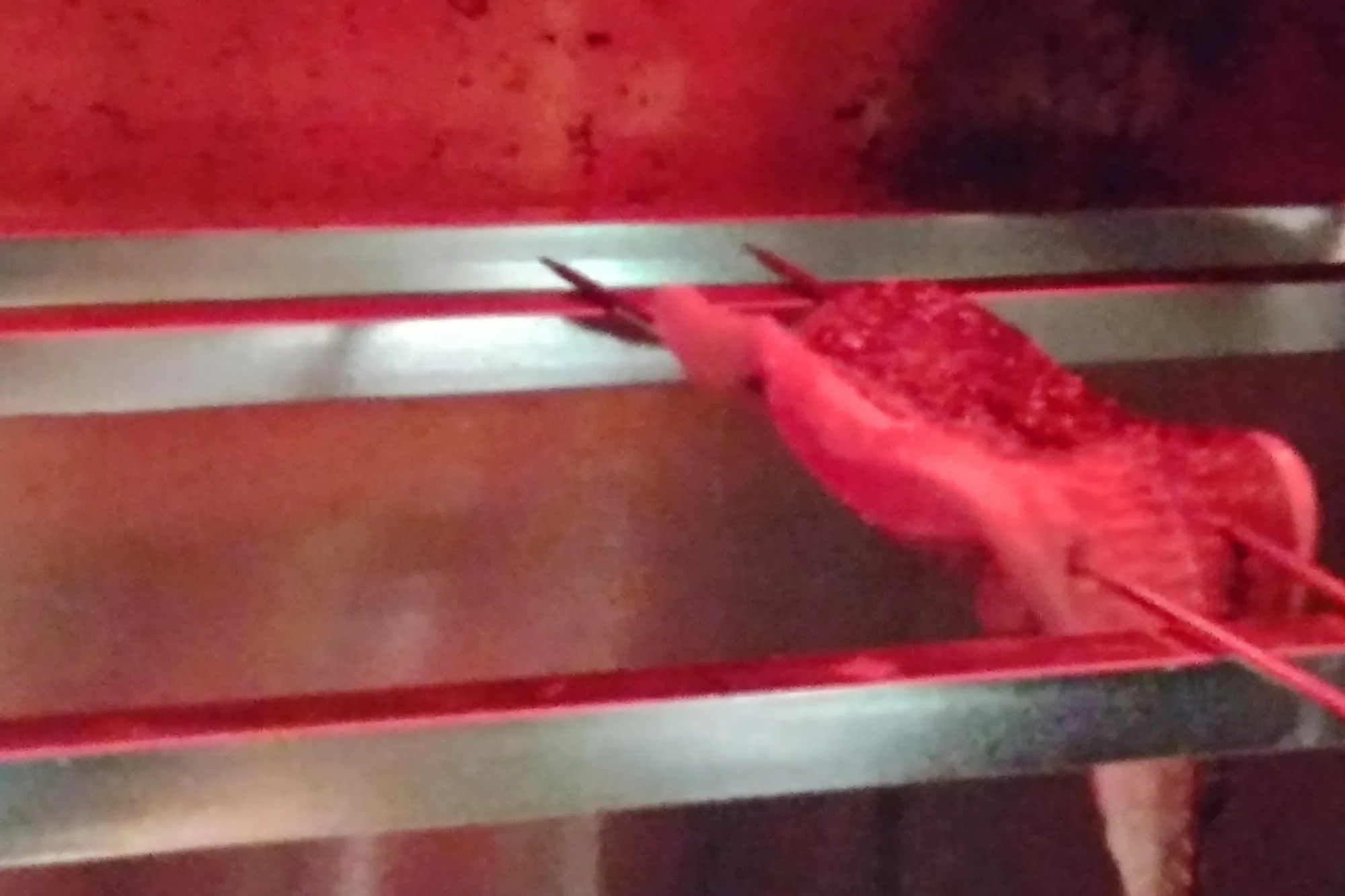

Final day: Grilled dishes and hands-on training
The final day begins with grilling dishes. Joel san uses the fish he filleted the previous day, grilling them with a sprinkle of salt. He also tries making saikyoyaki (grilled chicken marinated in sweet white miso). Under Instructor Yuki’s guidance, he learns the proper techniques for grilling fish and chicken to achieve a crispy texture without burning them.

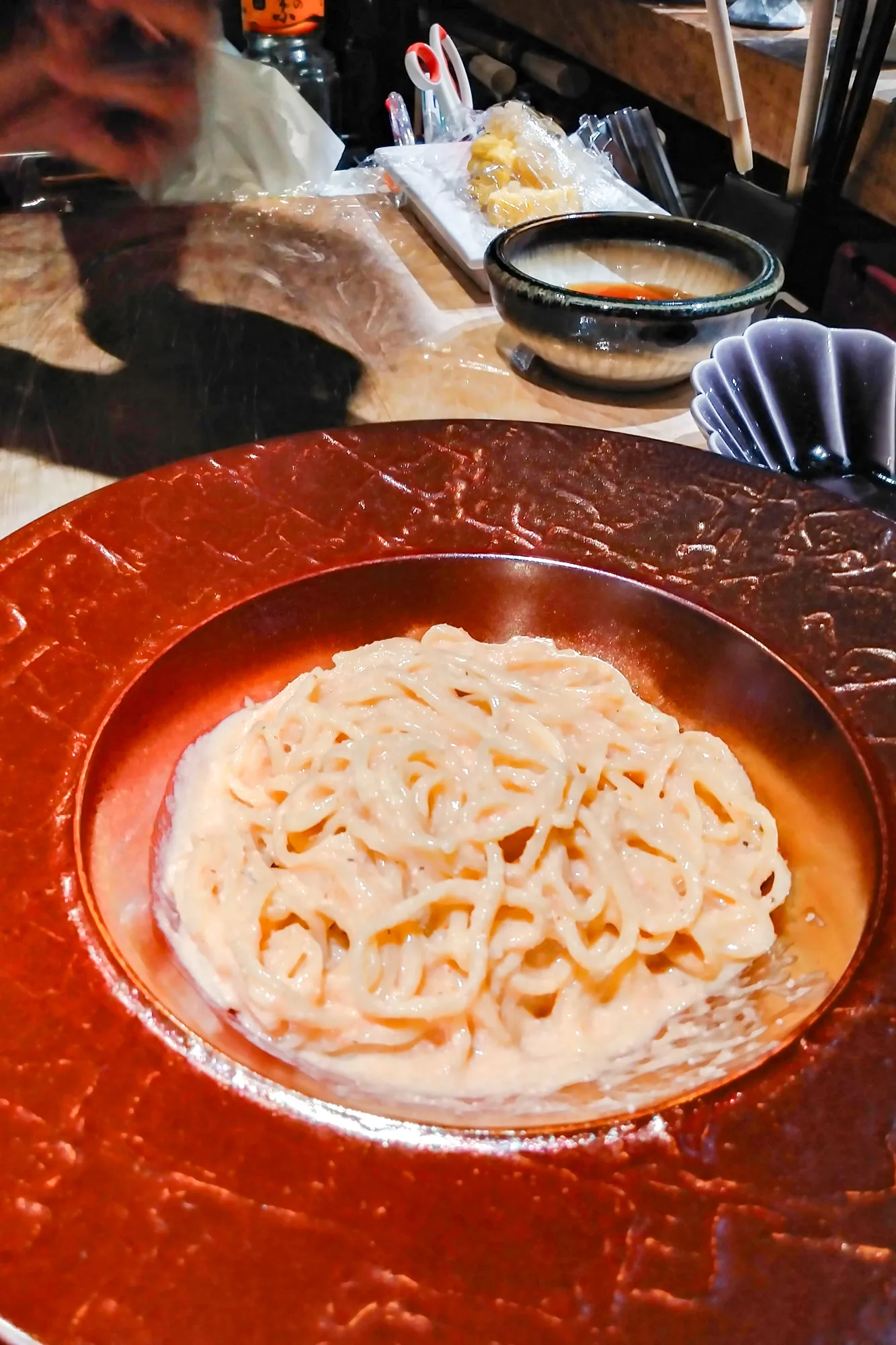
Special lecture: ‘mentaiko’ pasta
Since Joel san is a great lover of mentaiko (salted cod roe spiced with red pepper) pasta and wants to serve it at his restaurant, Instructor Matsumaru improvises a special recipe using ingredients readily available in the United States. Some of the ingredients from the original recipe are hard to find in the States, so this adaptation allows Joel san to prepare the dish with locally sourced items. After tasting it, Joel san excitedly says that he would eat it every day if it were served at his restaurant!
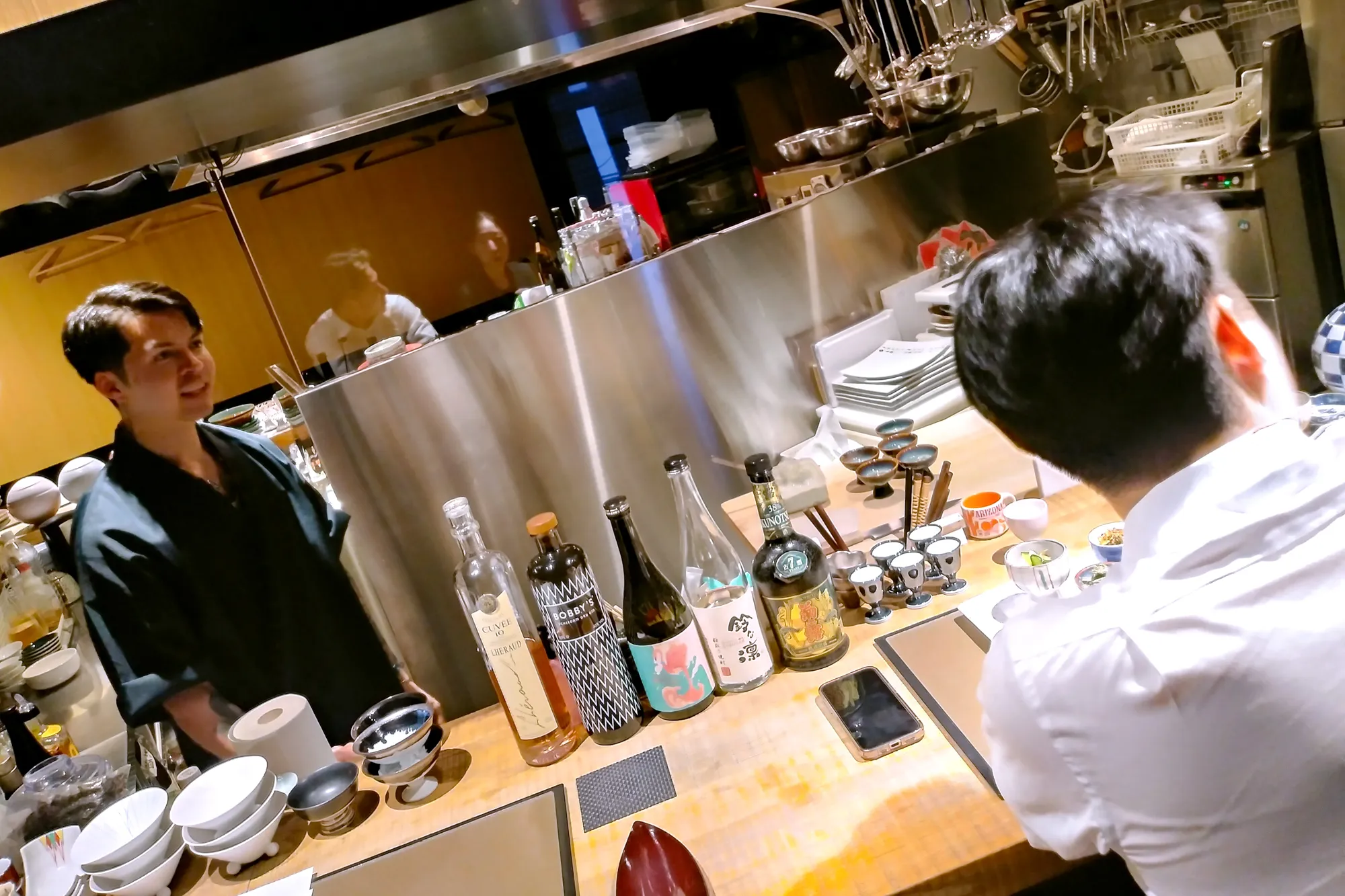
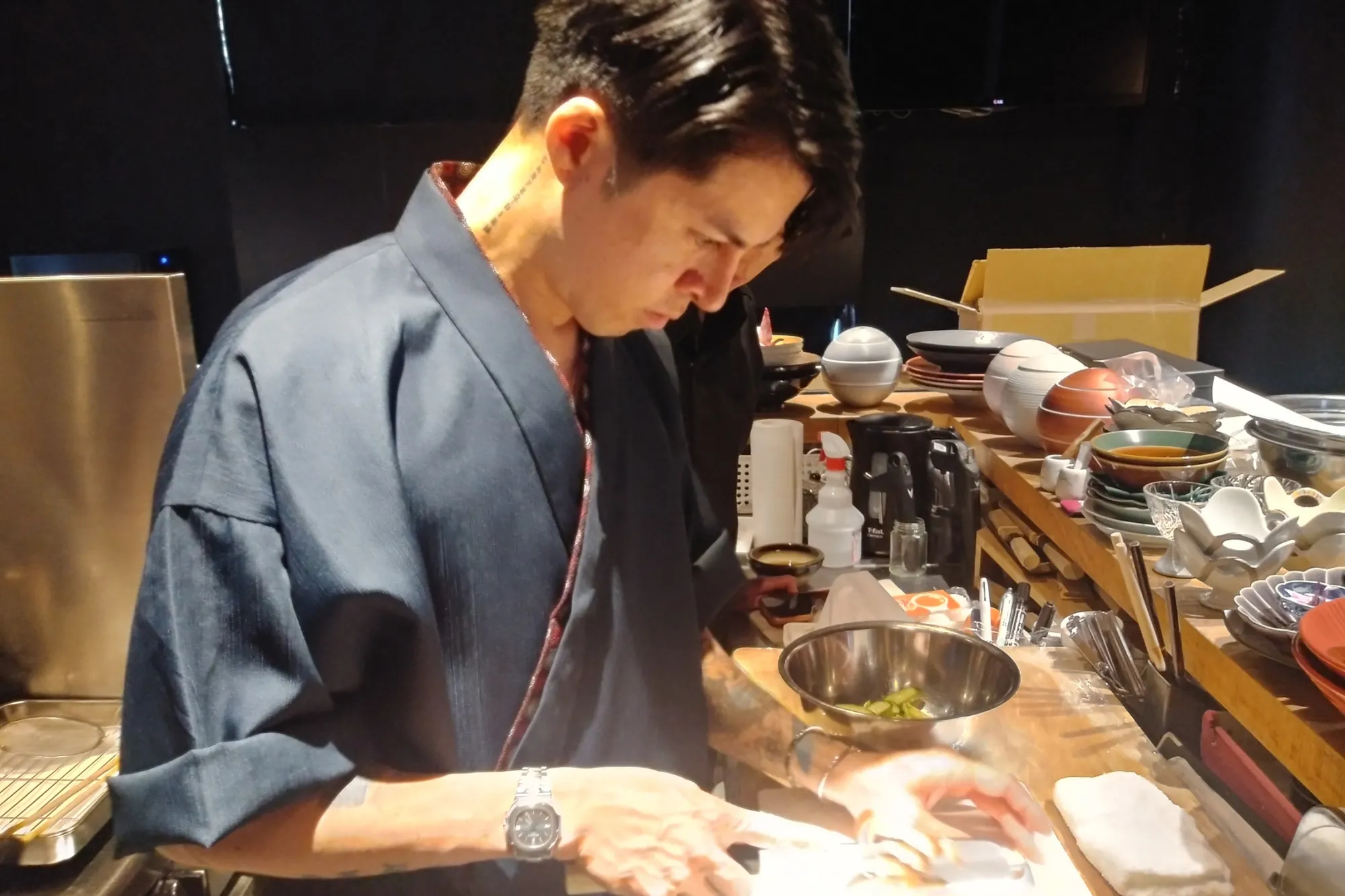
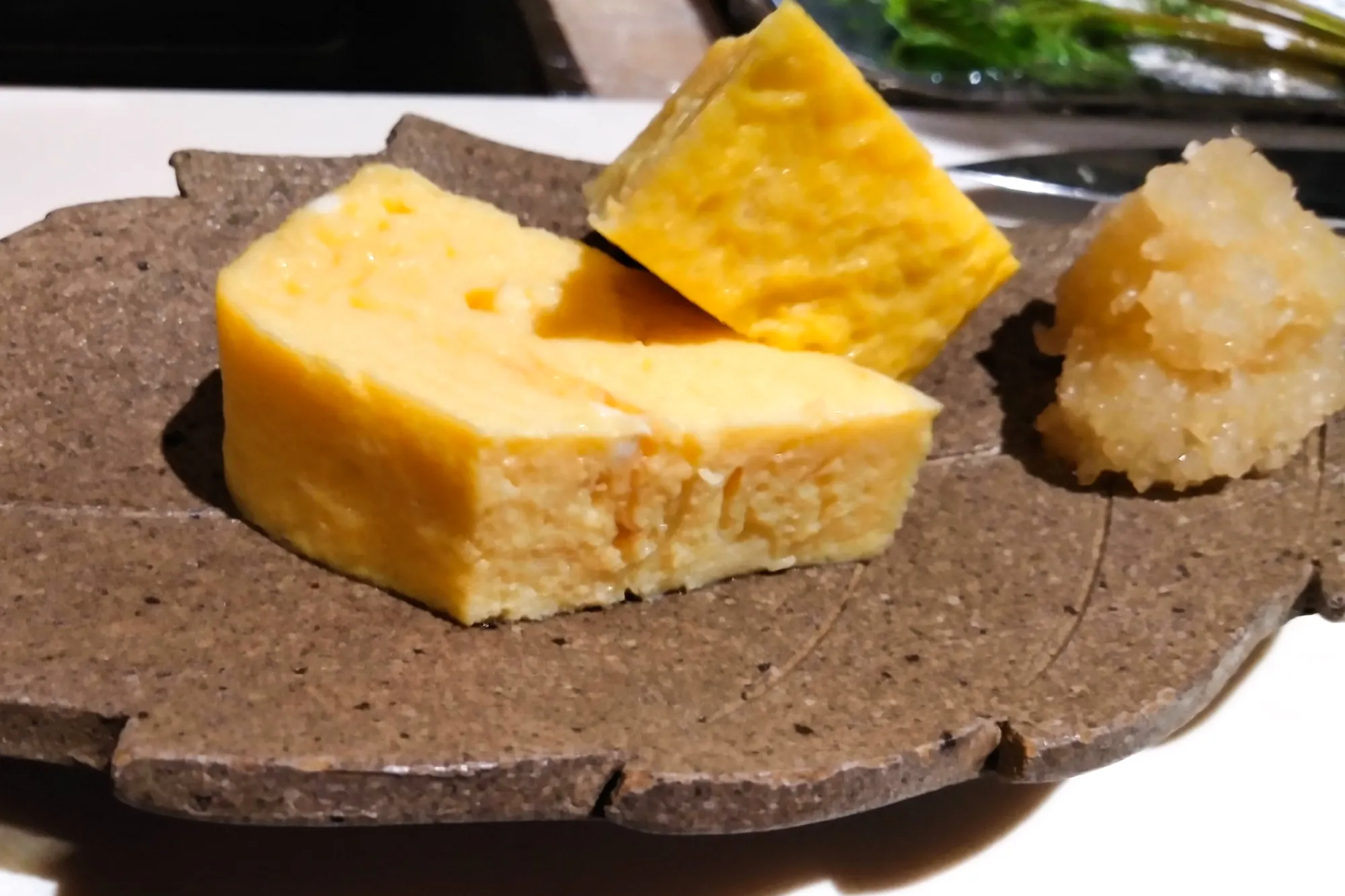
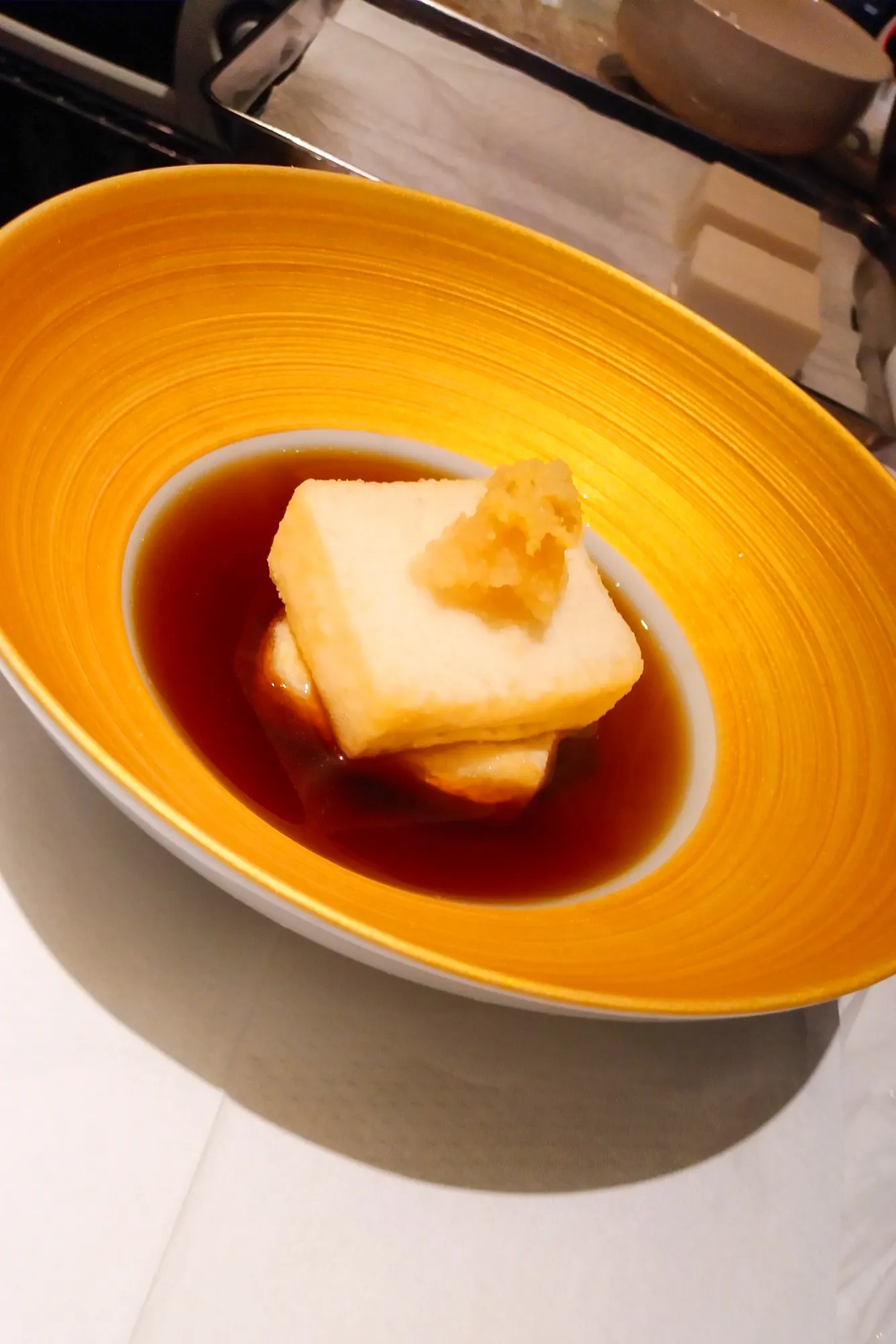

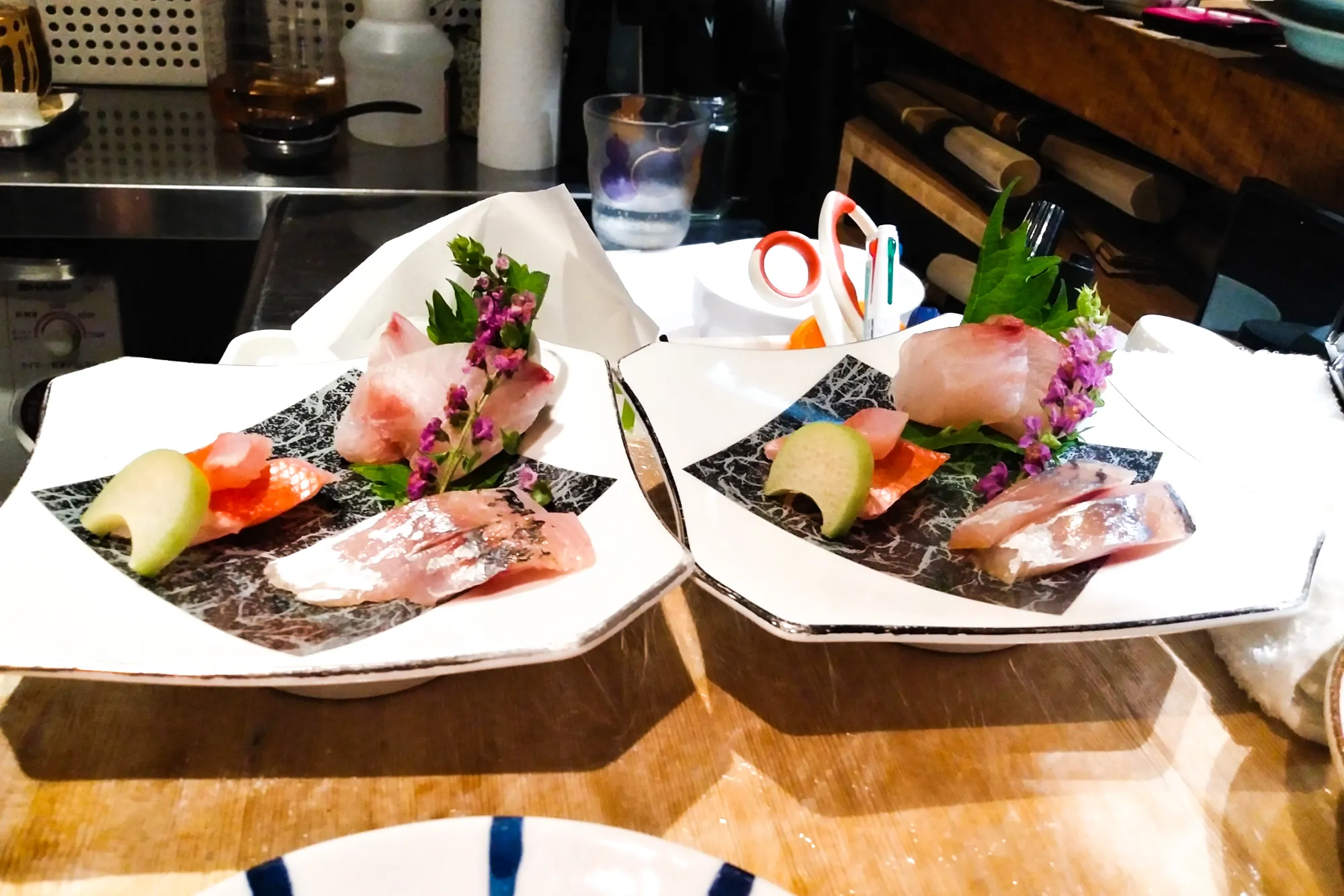
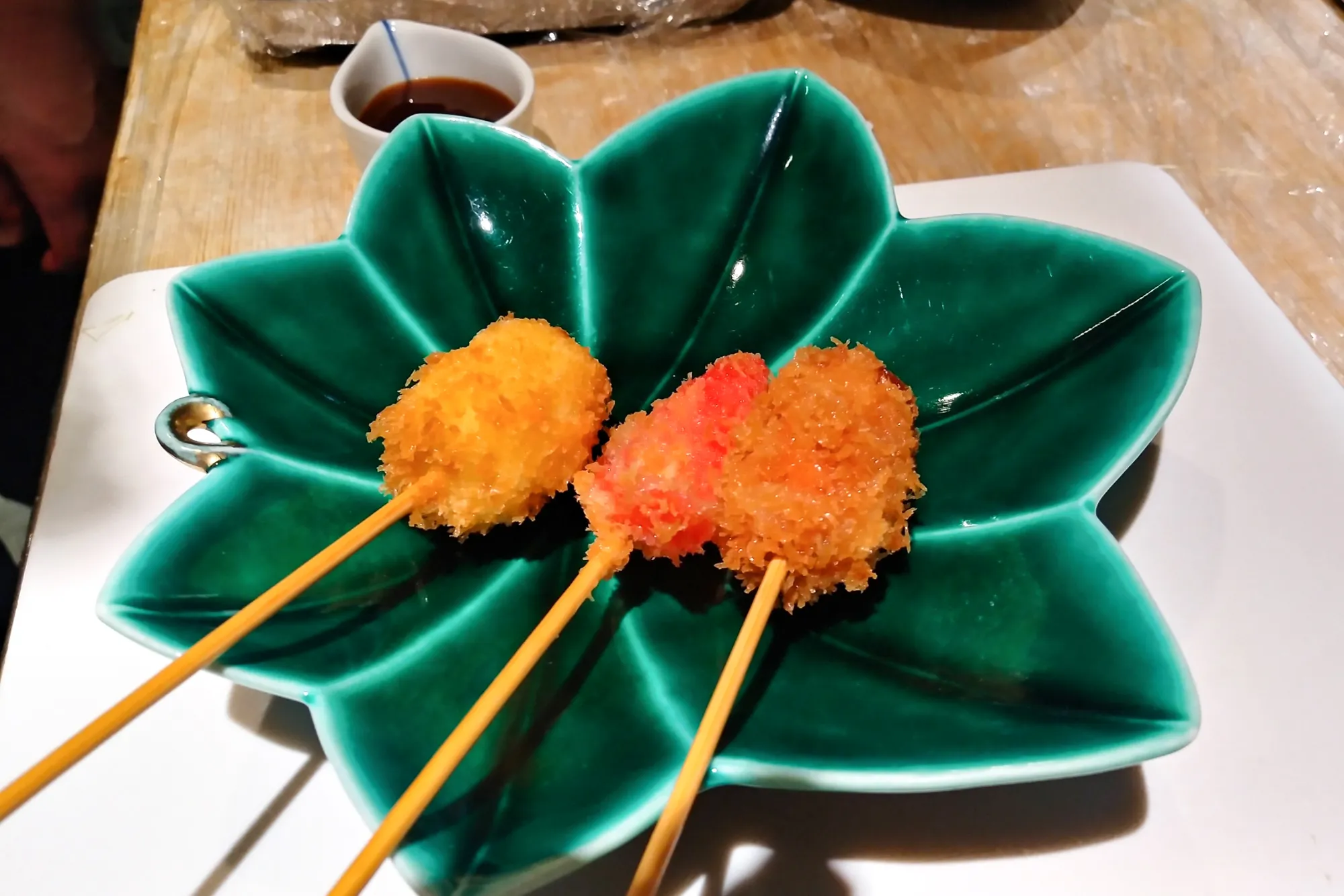
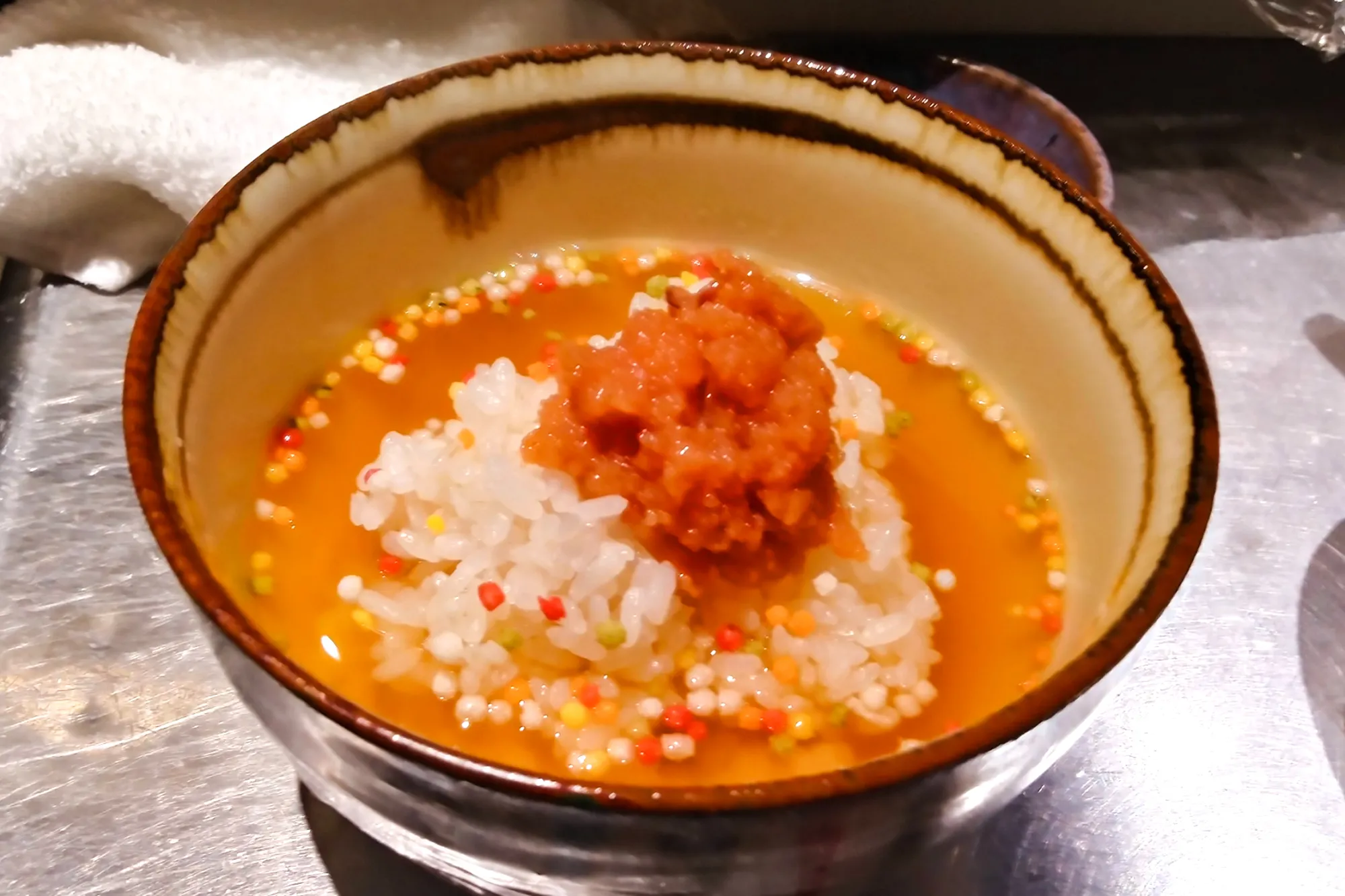

Finale
The goal of the final day is to serve a multi-course meal to regular customers with the assistance of the instructors. Joel san chooses to serve the following dishes from those he has learned this week: tempura (eggplant), sunomono (vinegared myoga ginger and cucumbers), dashimaki tamago (Japanese-style rolled omelet flavored with dashi), agedashi tofu lightly fried tofu with seasoned dashi, kushiage (deep-fried delicacies on bamboo skewers), grilled fish with a sprinkle of salt, otsukuri (sliced raw fish), and ochazuke (boiled rice soaked with seasoned dashi). He looks a bit nervous in front of the customers and struggles to make dashimaki tamago, which he could prepare smoothly during practice. Once he starts serving, Joel san strives to demonstrate all he has learned during the 1-Week Course. Though the restaurant is fully booked that night, with the instructors’ guidance and support, he manages to serve all the planned dishes successfully and appreciates their dedication. He seems delighted to have completed his task!
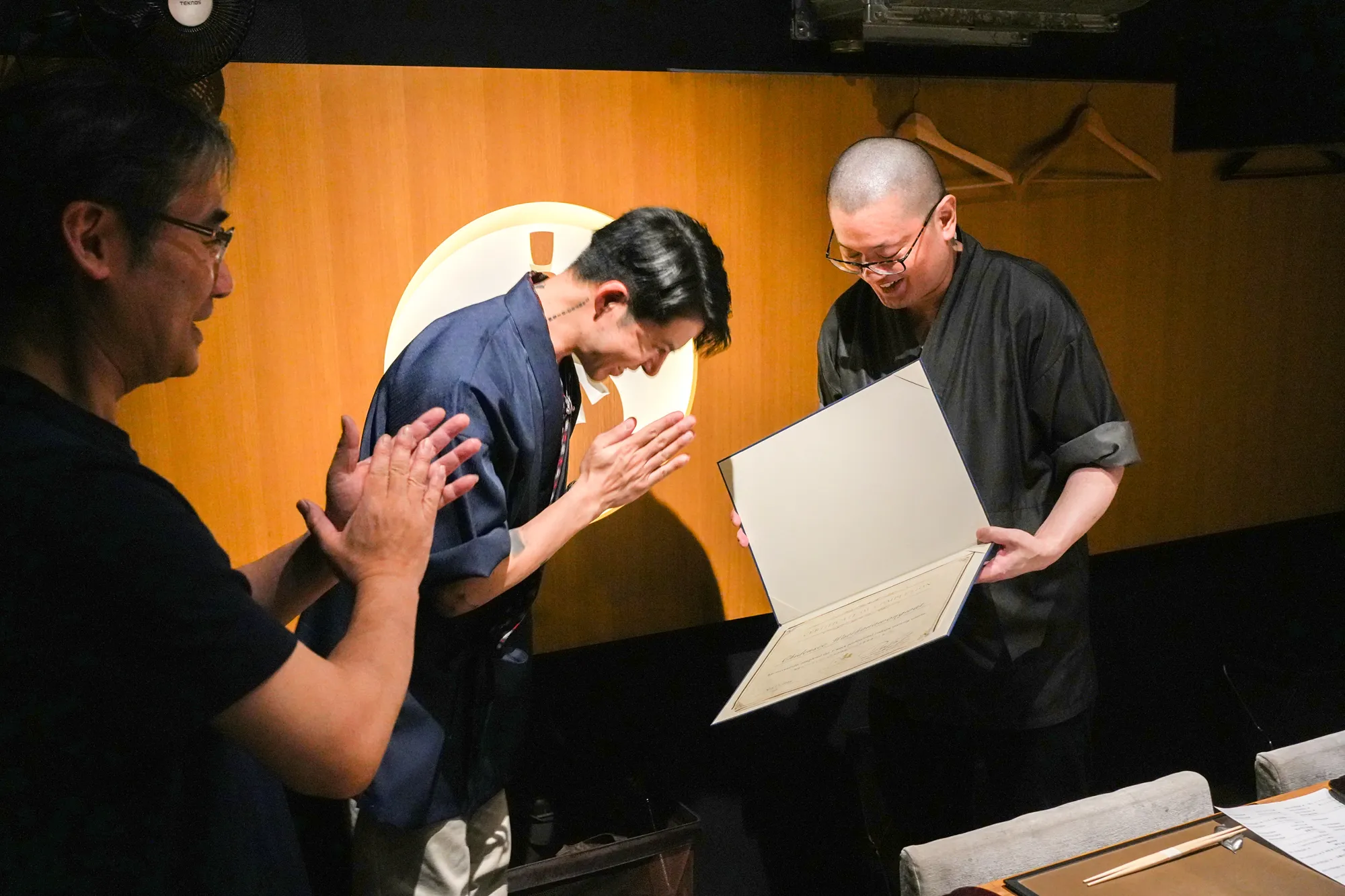
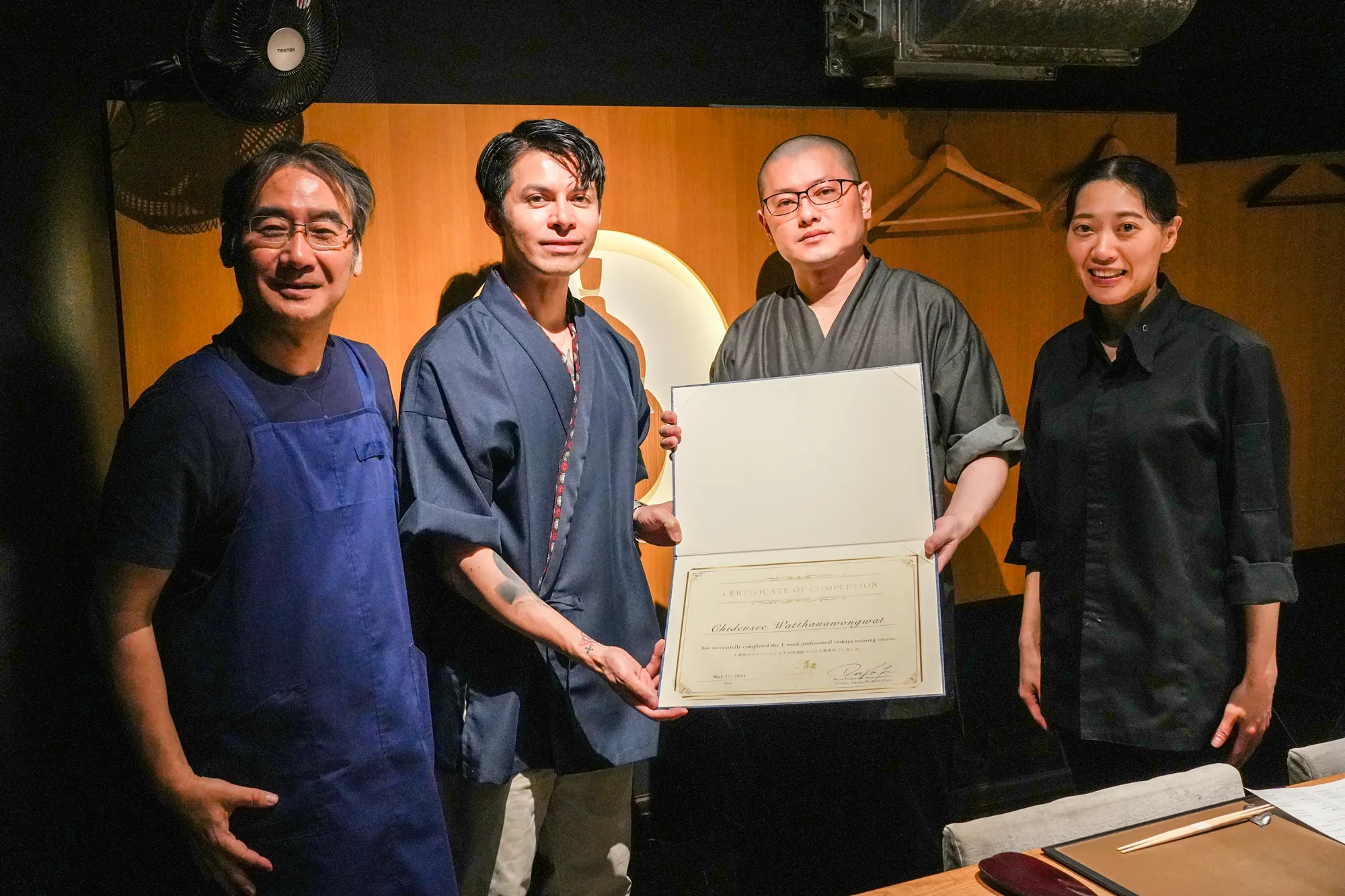

That is all abou the 1-Week Izakaya Course with Joel san. We would like to express our gratitude to him for participating in both the Izakaya and Yakitori courses. We hope he has gained extensive knowledge not only about cooking but also about Japanese food culture, and that he will bring what he has learned here back to the States to share with his team. We sincerely wish him great success in his new venture and look forward to seeing him either in Japan or New York in the future!
